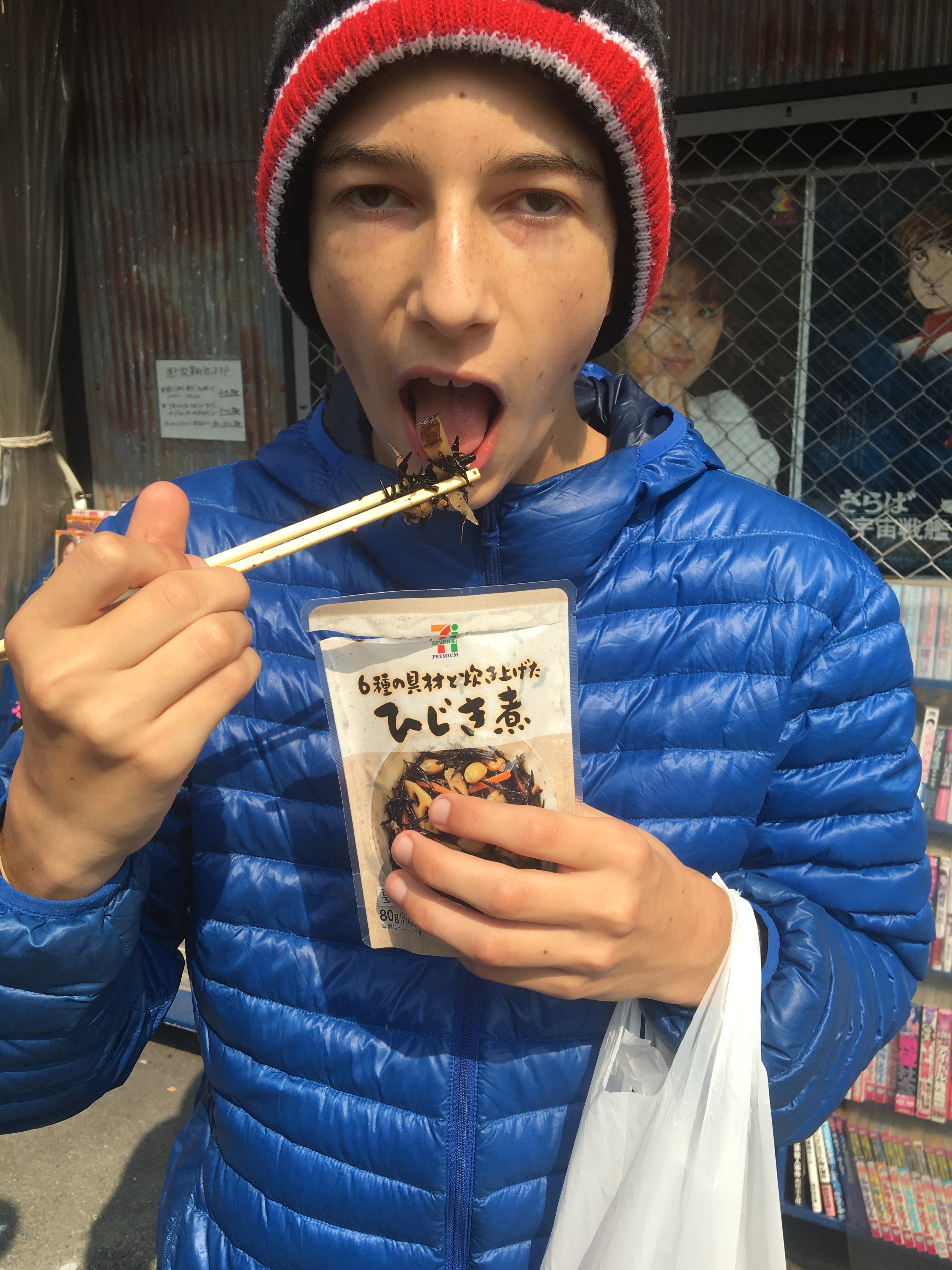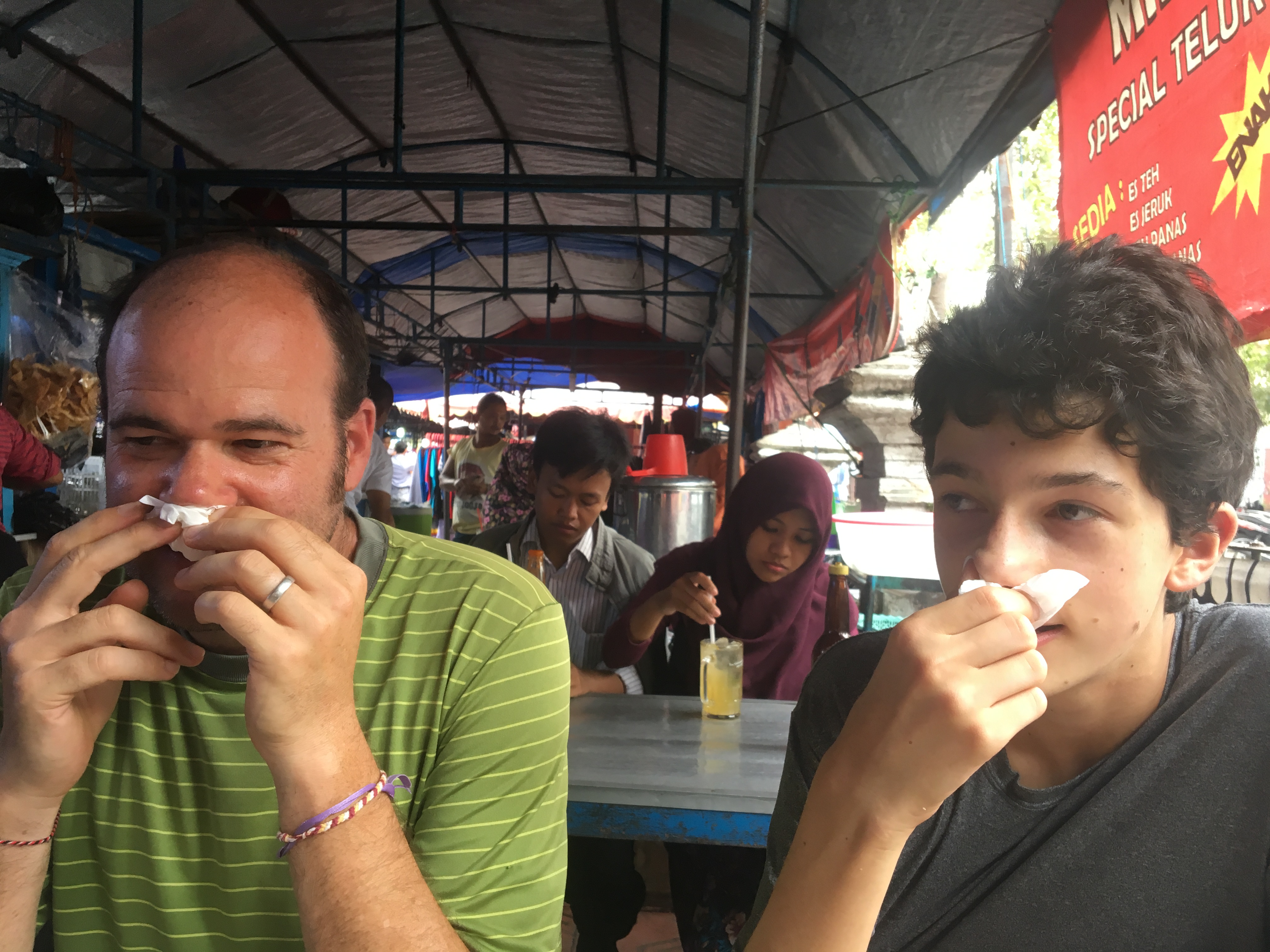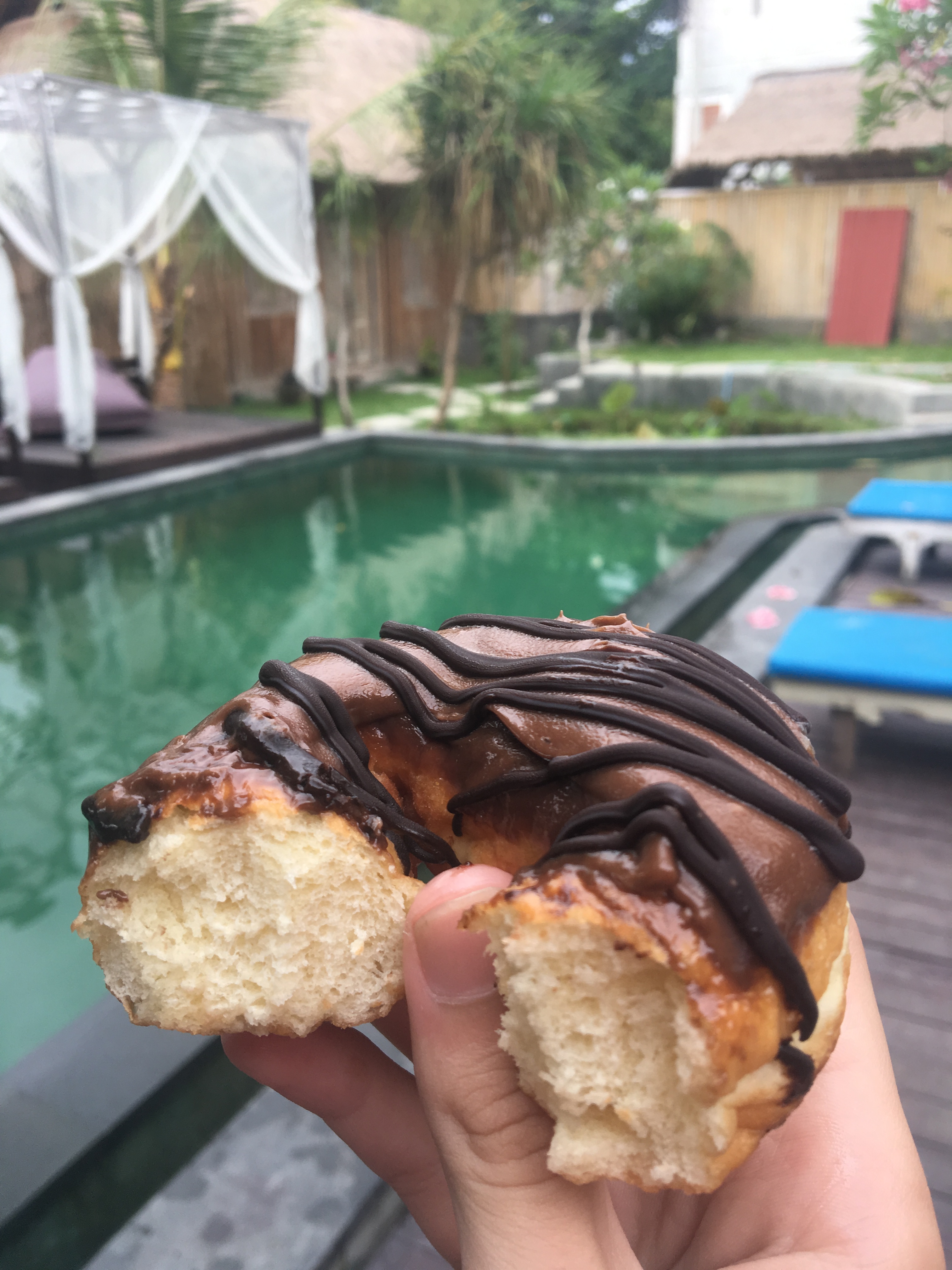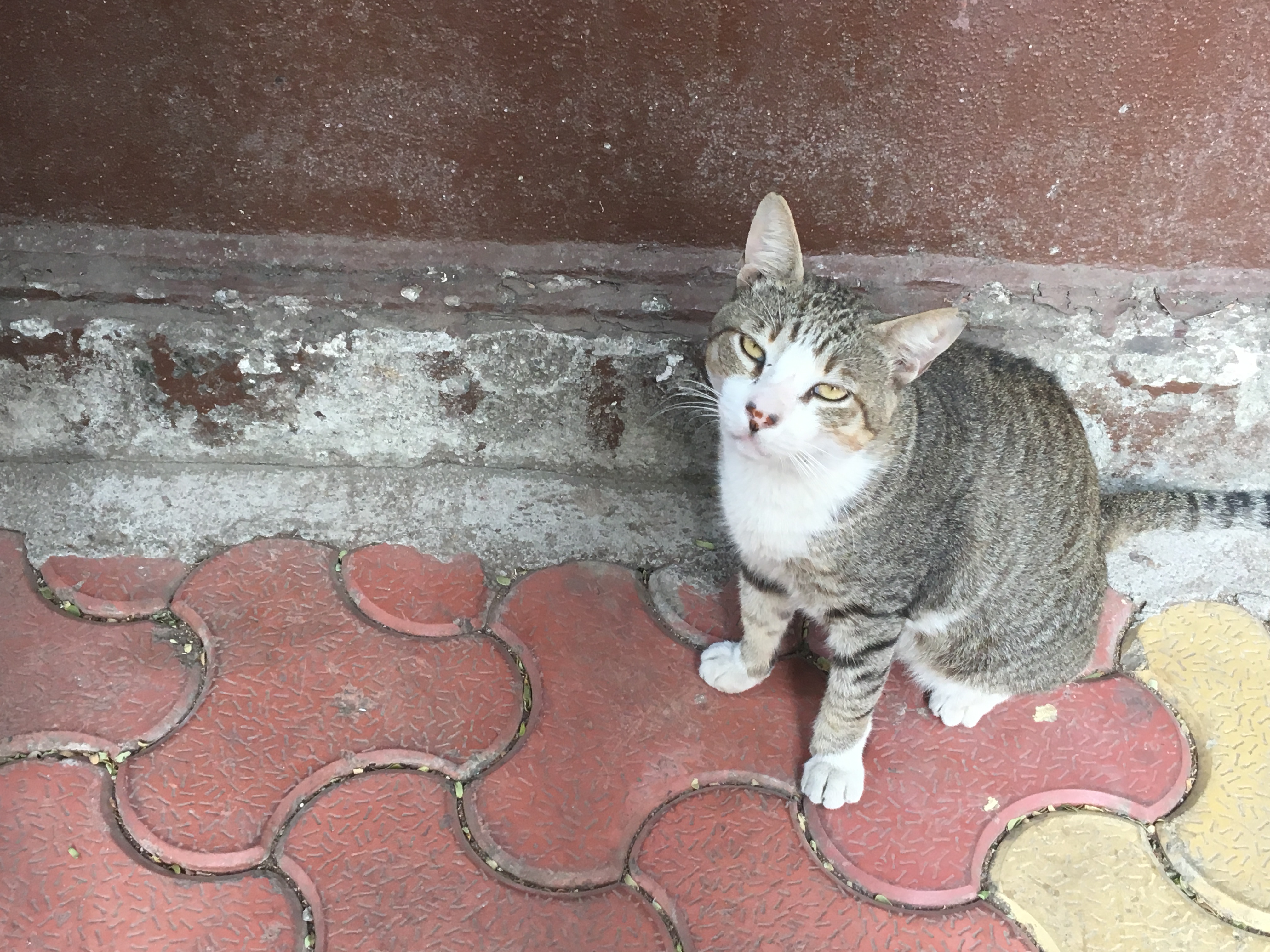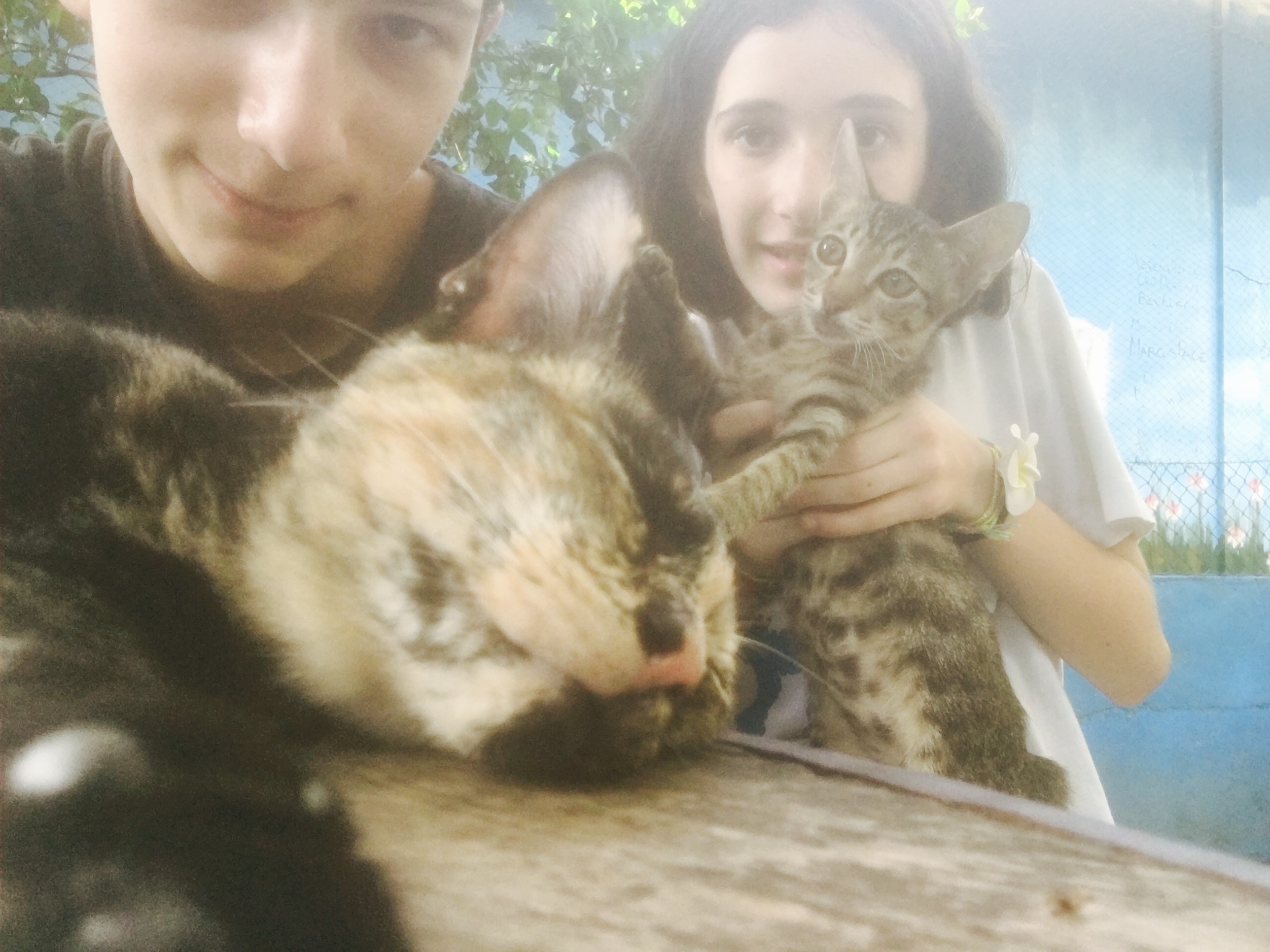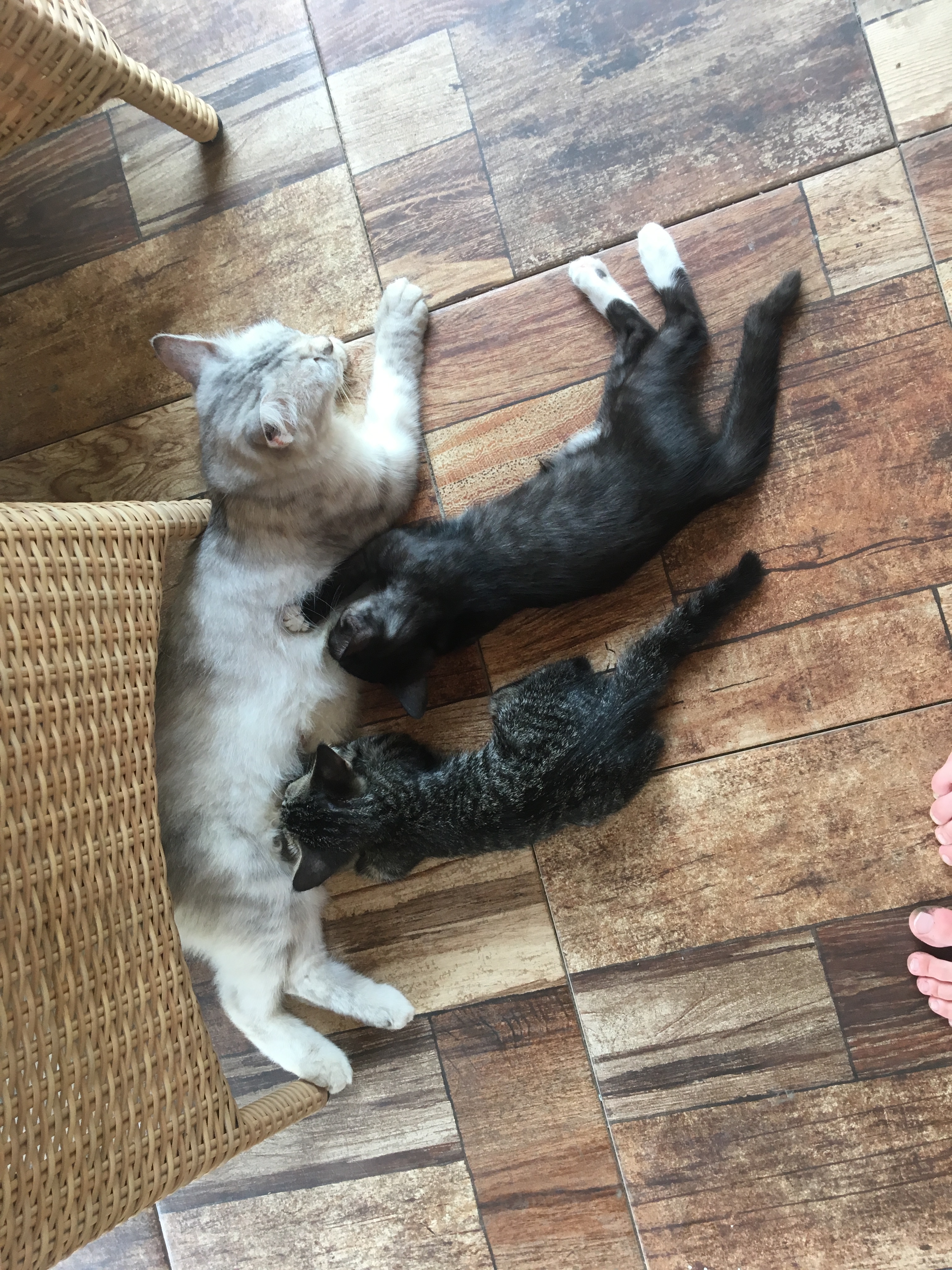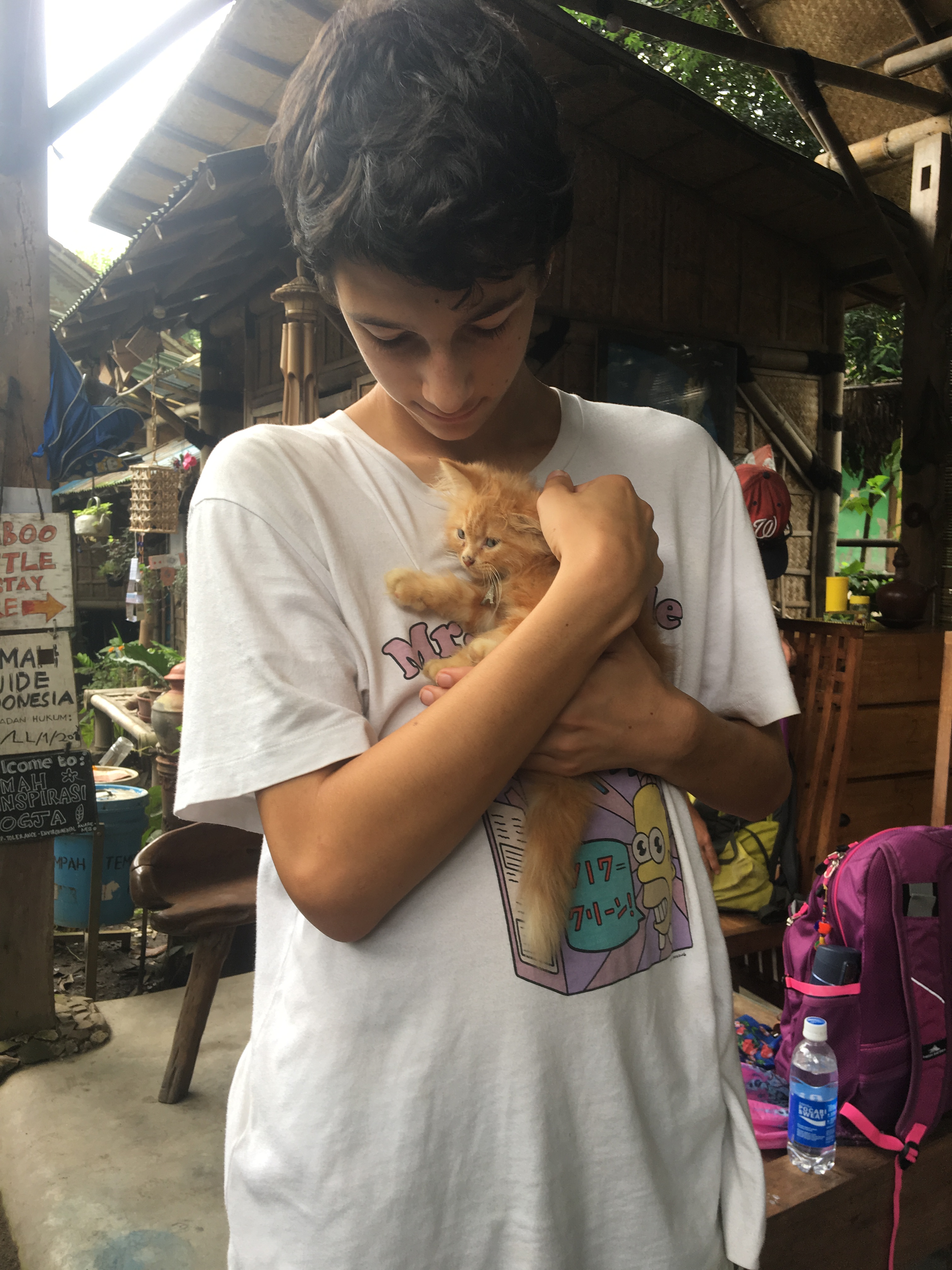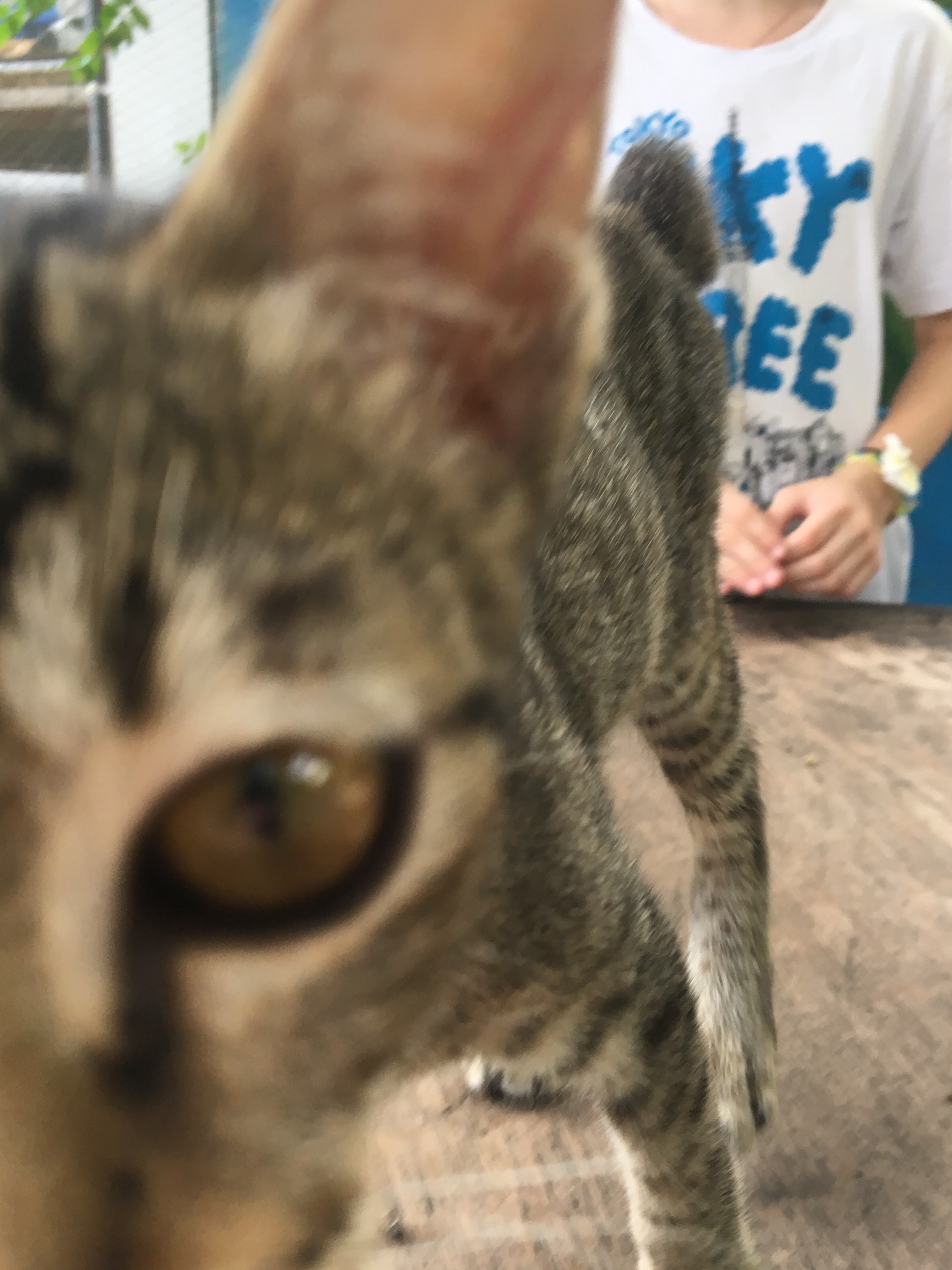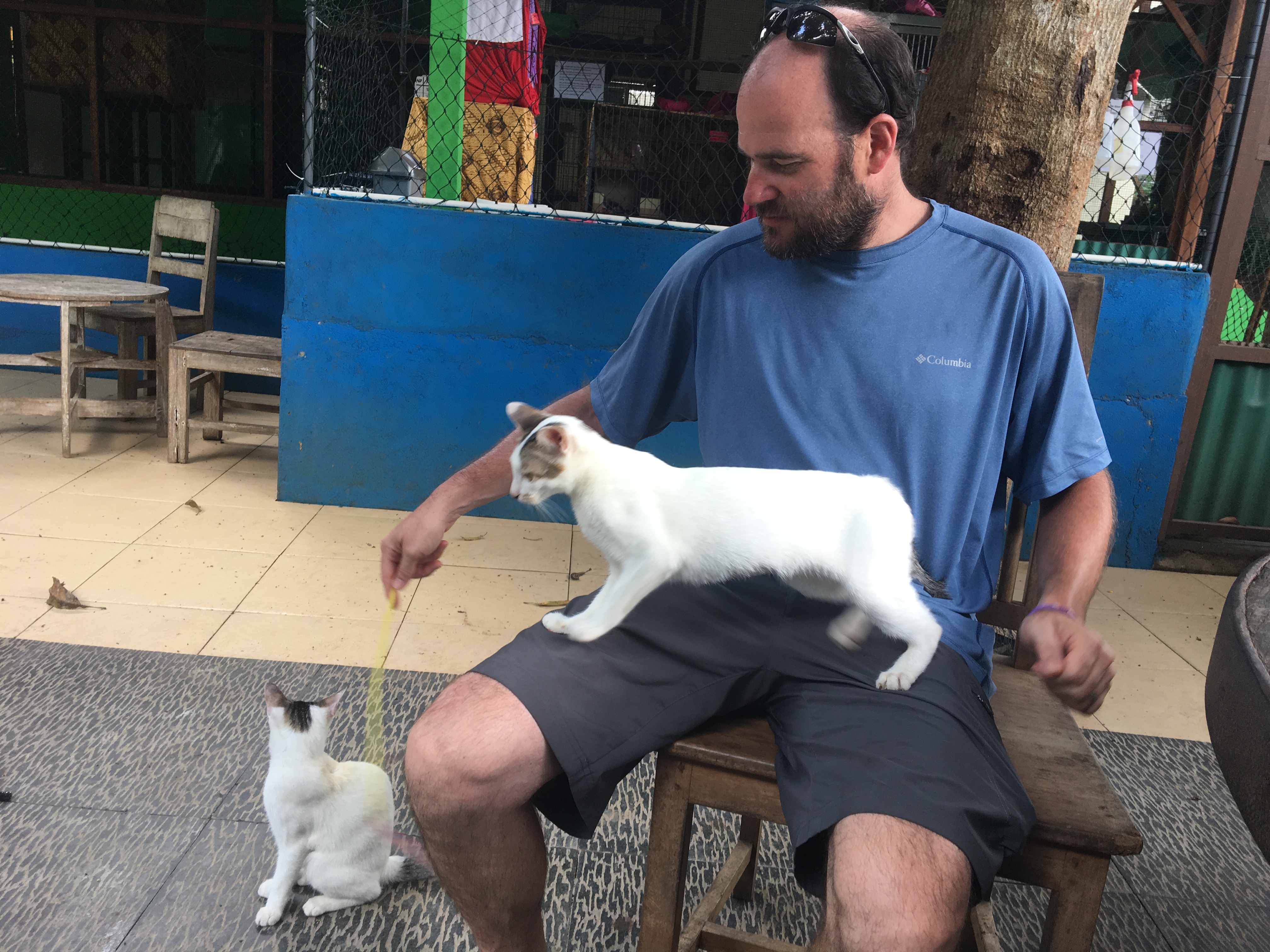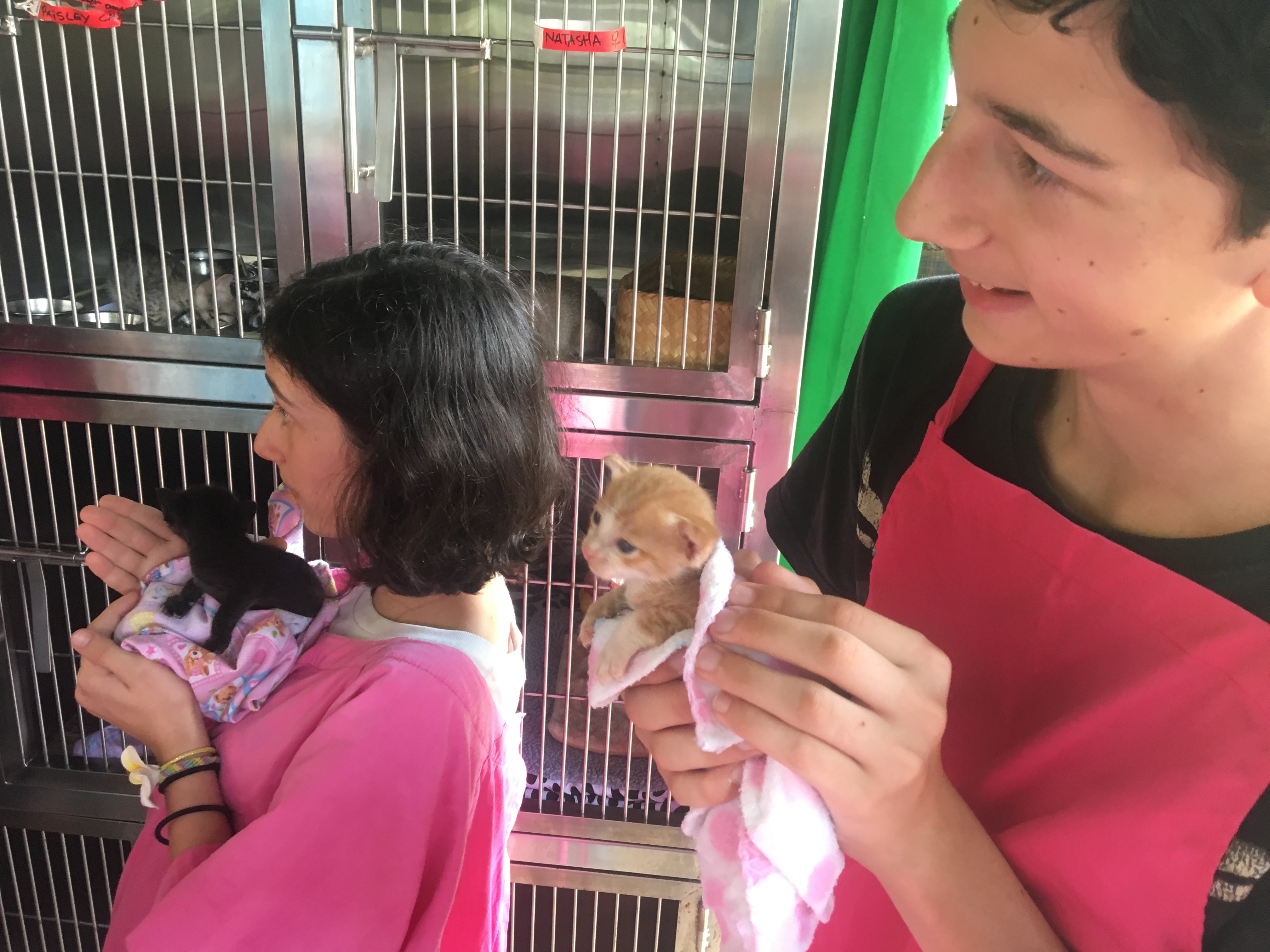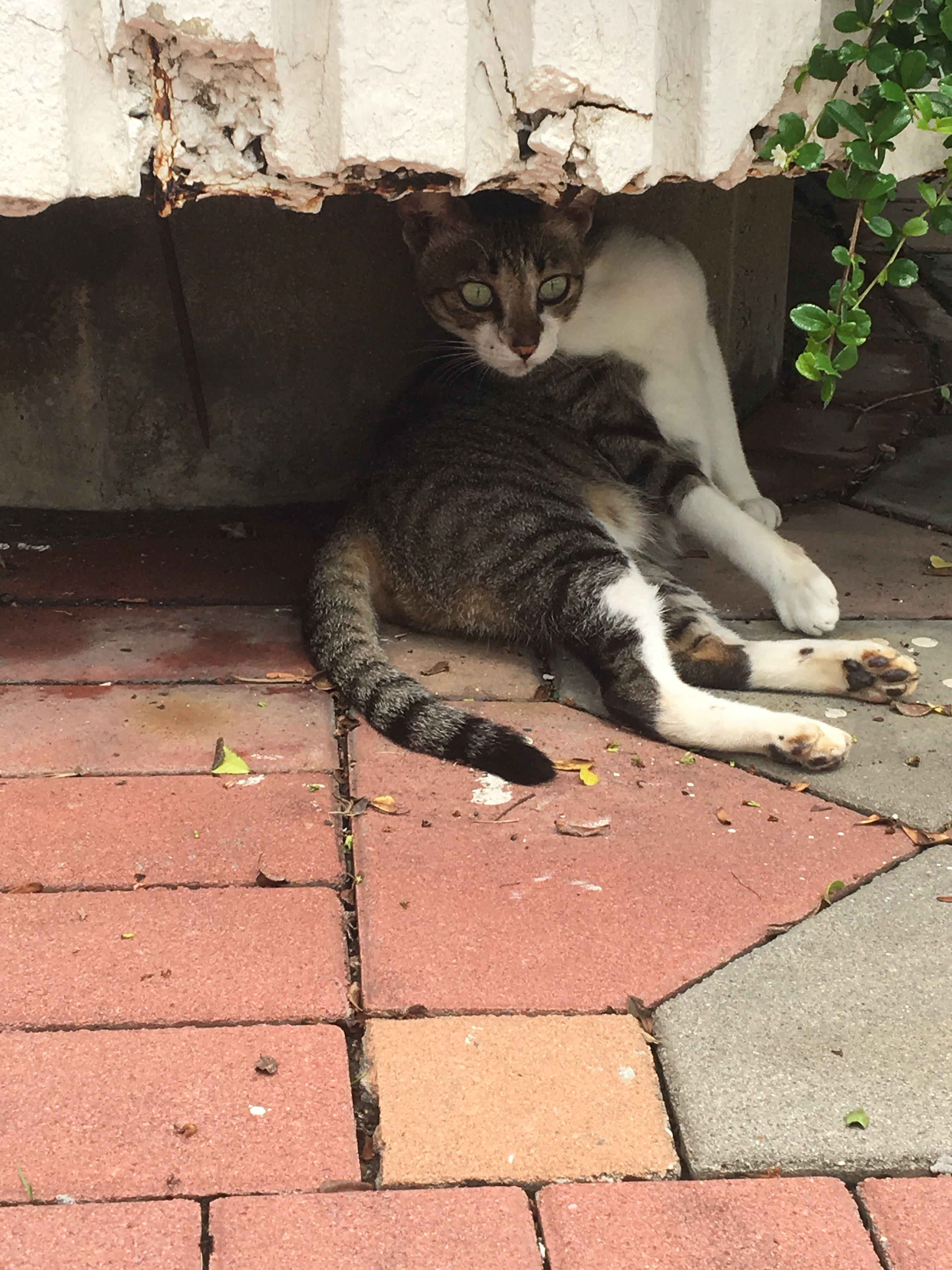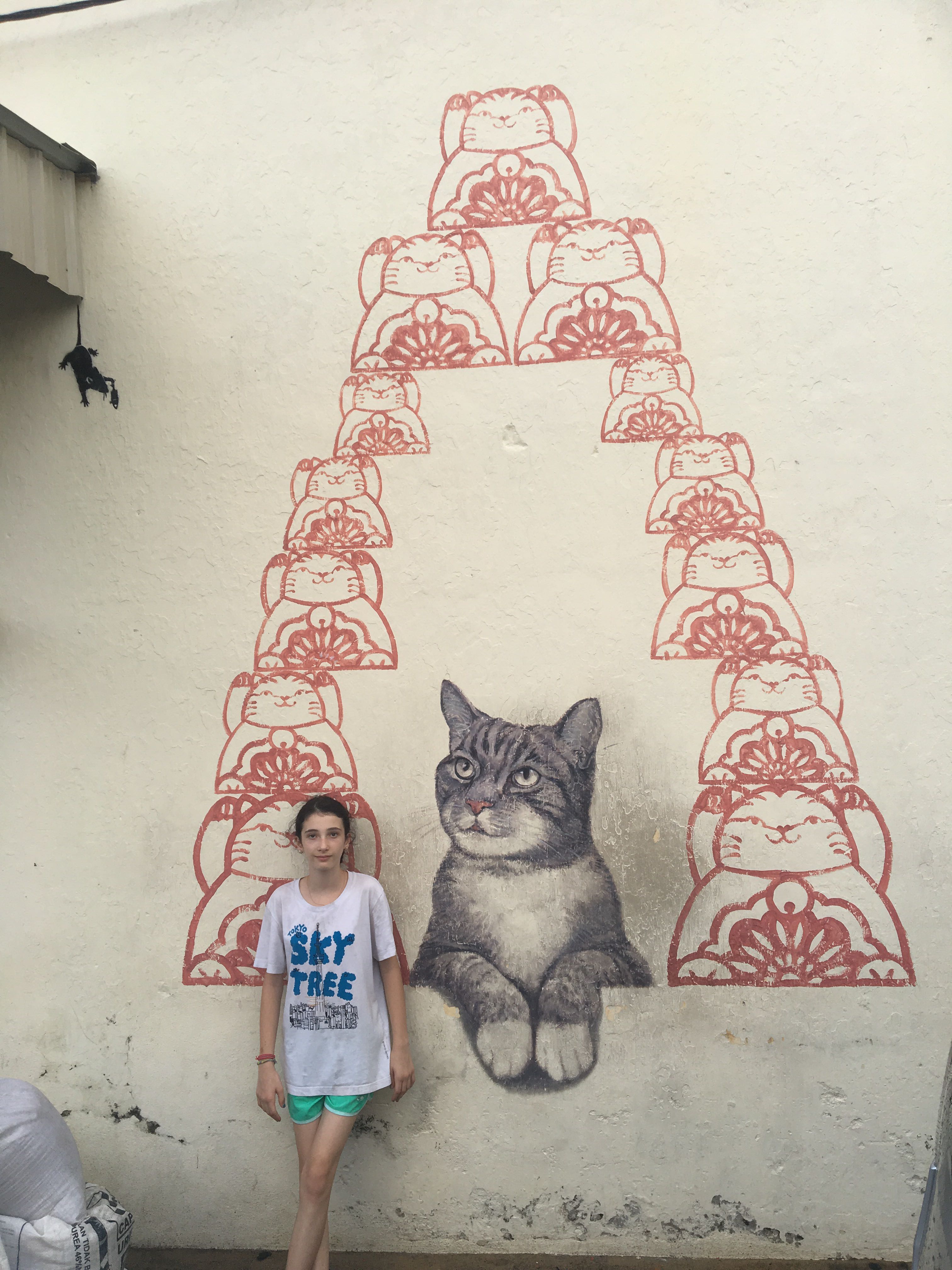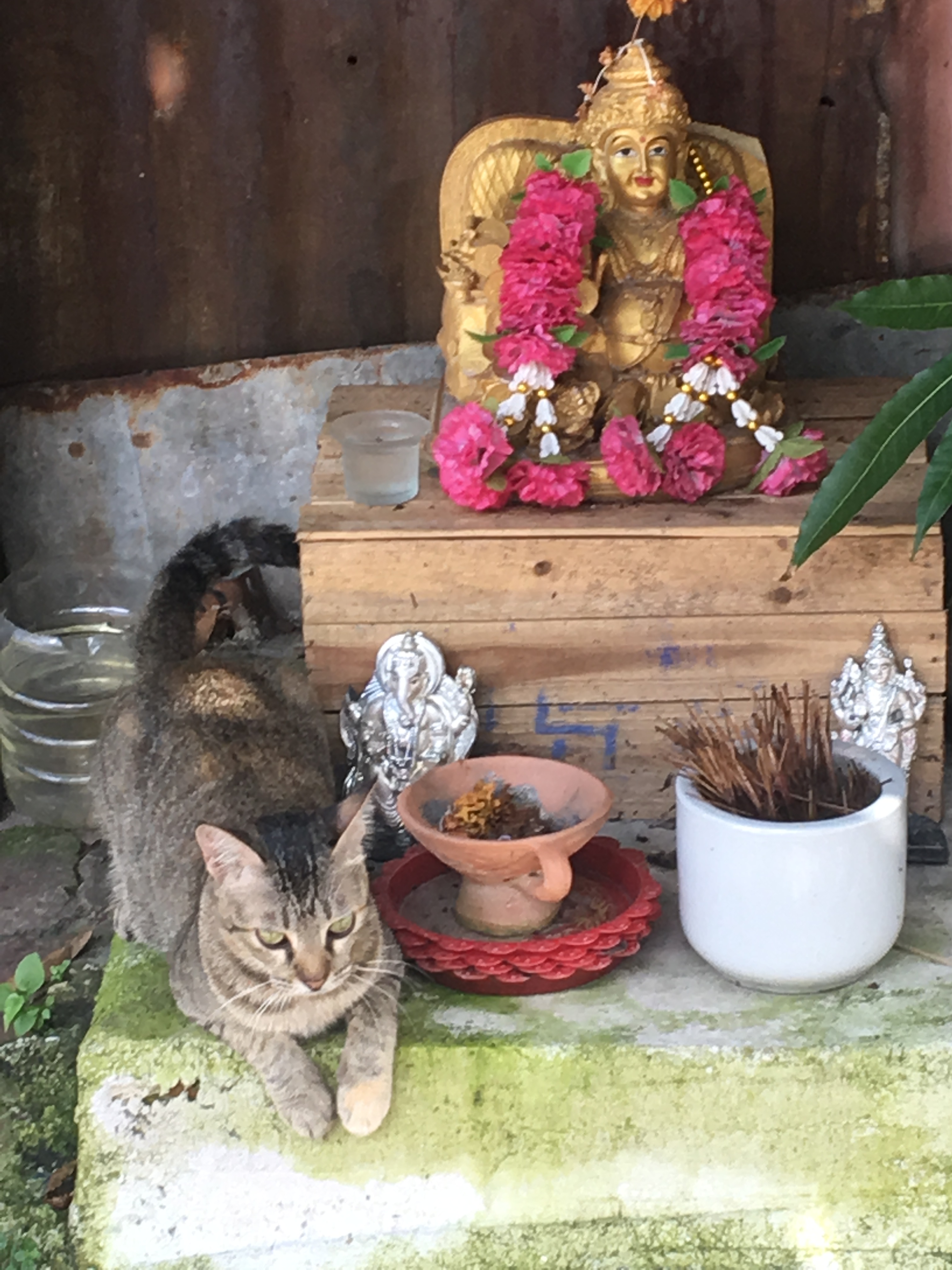Don’t Call It A Comeback…
The tradition continues…
Did you miss me?
I know, it’s been a while since my words have graced your screen. A lot has changed since we last spoke (or rather, I spoke while you listened, which is the way most of my conversations go). I finished my sophomore year of college and am now almost twenty, a thought that terrifies me. And how do we cope with this quarter-life crisis? By jumping headfirst into drastic change. Which brings me to why I’m resurrecting this publication in the first place. Instead of heading back to Washington, DC this fall, I’ll be taking my talents to South Beach. Not Miami, a different south beach.

I’ll be spending this upcoming school year in the tiny island city-state of Singapore. In approximately a month, I’ll make my way to the Yale-NUS campus, dump my duffel bag, and immediately make a beeline for the nearest hawker center…
View original post 424 more words
The Final Blog! (Re-entry is a b*@ch)
September 12, 2016
The Ramblers set out on an adventure (AKA Journey™) not knowing at all what to expect…
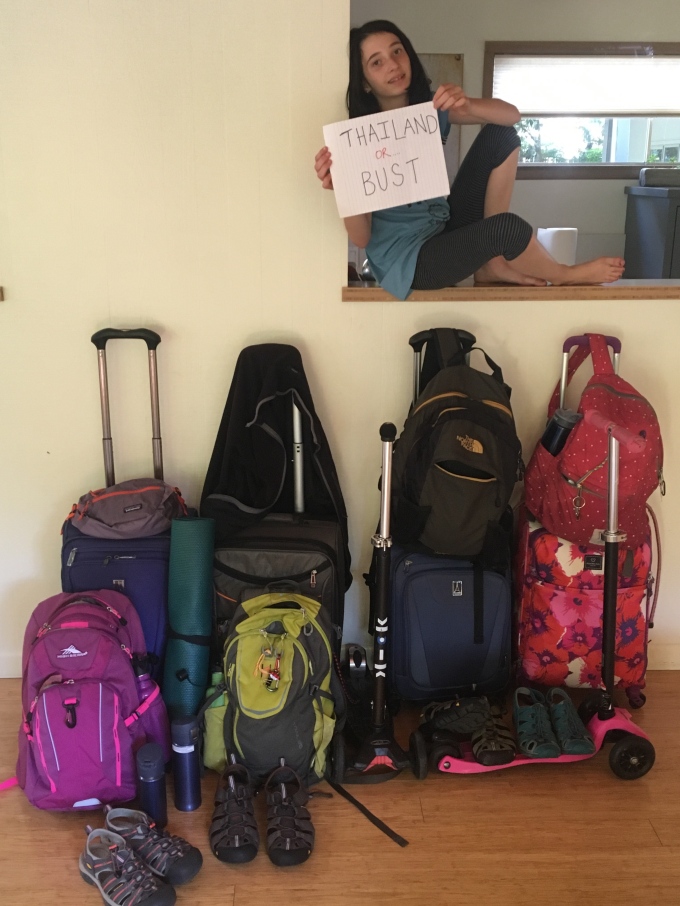
September 12, 2016
Well, it’s ten months later. We documented as much as we could (as you read) and now we’re back! Most everything you see (+ more) in the picture above returned with us (except for the scooters, of course).

July 15, 2017 (with lots more luggage and much larger lil’ Ramblers)
But wait, rewind. Before we enjoyed this moment back in our Portland home, the Ramblers were still very much on the move…The stateside Journey™ is just beginning…
First, there was a long flight from Warsaw to DC…

We’re on our way home. Doug, are you okay? “Of course, just perusing Sky Mall.”
Lil’ Ramblers happily arrive in Washington D.C.
Nanna and Poppa meet us at the airport!

Waiting in the lost luggage line
And, of course, there was taking care of Doug’s feet – a very un-Rambley, but necessary step towards re-integration.

This highly skilled professional cut to the chase and asked Doug what color he wanted to celebrate his July return to the states

Heebie-jeebies much?
Because our Portland home is still rented out, we linger in one of our favorite places – Nanna and Poppa’s beach house in Lewes, Delaware…right in time for Doug’s feet to celebrate America’s birthday!

Flag cake courtesy of Zev and Maya (and the Barefoot Contessa)
There’s a lot of marveling at how much the Lil’ Ramblers have grown…

Maya and Nanna are tied with Zev coming in at a (not so) close second
Doug gets back to doing what Doug does best…

burning chicken…

Kelly and Paul show up for some beach action…
Obviously, after 10 months without, we feast upon Mexican food …

Ay, ay, ay!
We squeeze in a quick jaunt to NYC…

Hitting up Katz’s, B’tayavon!

And, around the corner? Russ & Daughters for some smoked whitefish – boo yah!
Then, we’re off to California to surprise Papa Mickey for his 80th birthday…

Happy B-day Papa!! And many more…

Partying with Papa
Another day, Grandma surprises Zev with profiteroles! Remember Zev’s profiterole obsession?

It’s one of my TOP TEN, people!
And Maya’s surprise is a local production of Mama Mia…
Of course, there’s dim sum with Uncle Matt, Leo and Autumn…

谢谢, Uncle Matt!
And then, finally, Rambler Keens touch terra de Rip City, after 10 months and 3 days…

Welcome to PDX
Amazingly, Dairy Hill picks us up at the airport…

Thanks Uri!
…and takes us home.
 Bonding with Ben (reunited and it feels so good)
Bonding with Ben (reunited and it feels so good)
We open the fridge to find the amazing Lois stocked it with goodies…

Bacon, salami, fresh fruit, coffee, wine and more…
July 15, 2017
Back in Portland. This is it. Ramblers out. For good this time.

Rambler Fashion Don’ts

Don’t wear multiple hats
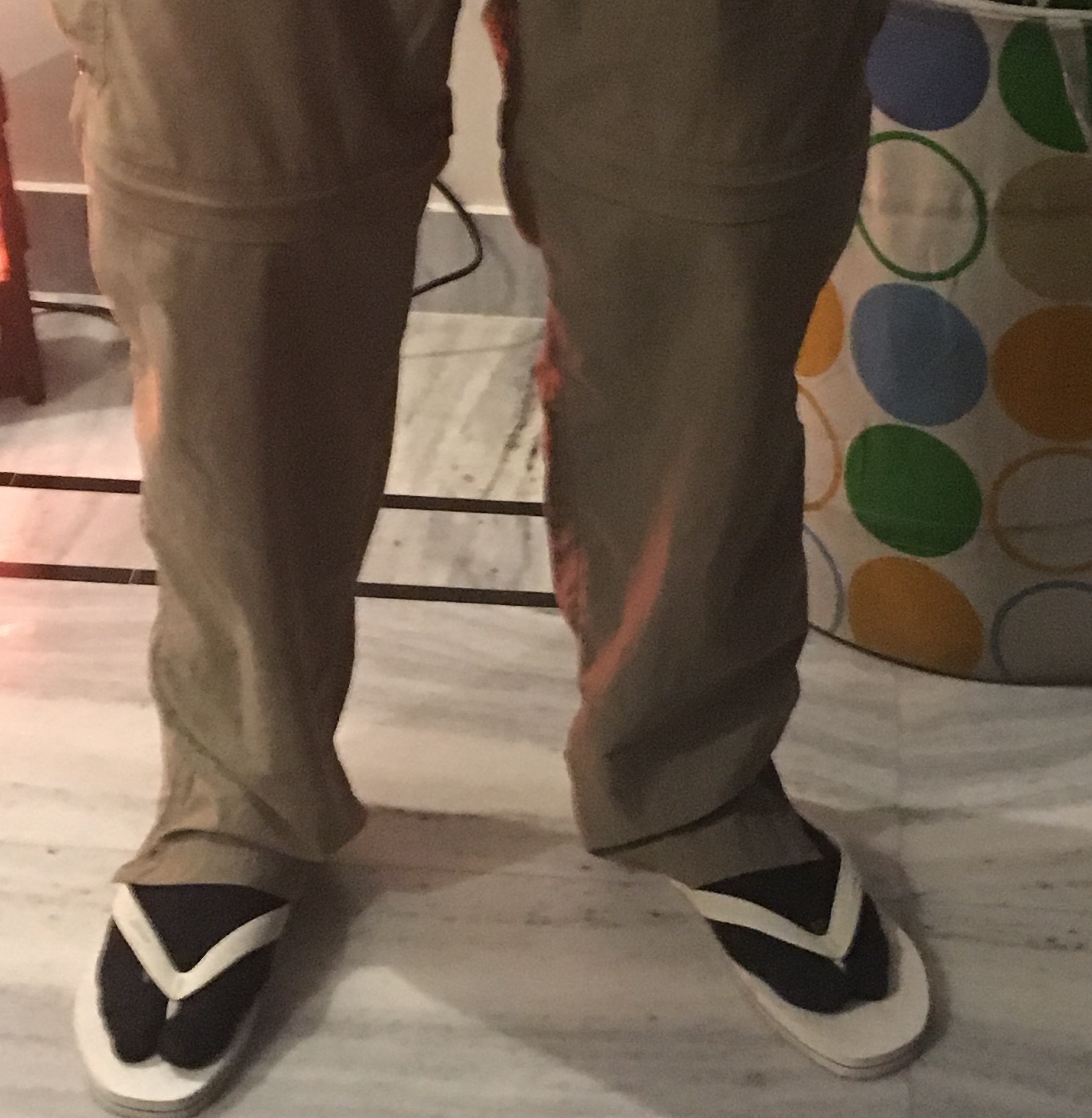
Don’t wear zip-off’s, black socks and white flip flops
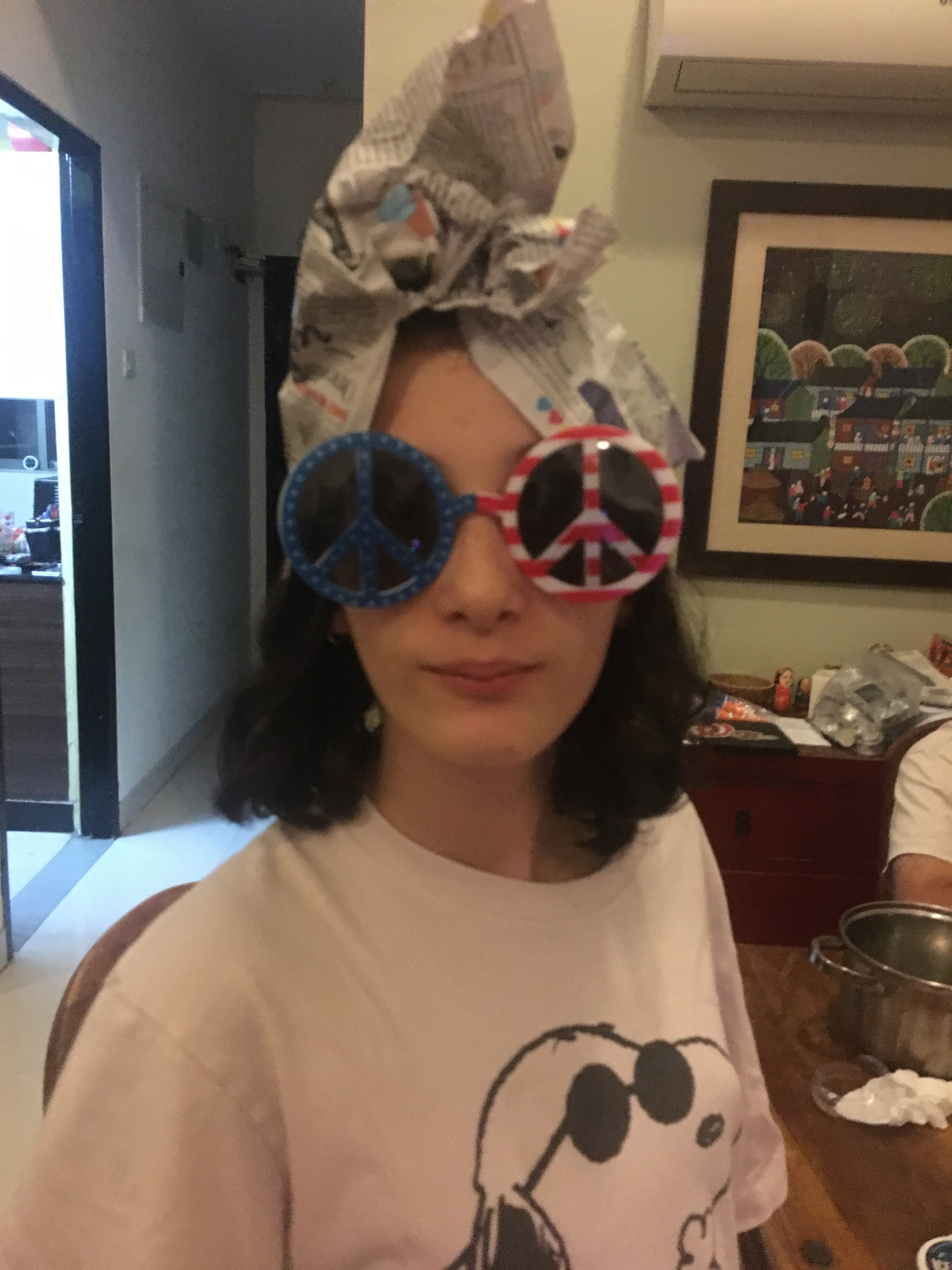
Don’t wear newspaper as a hat
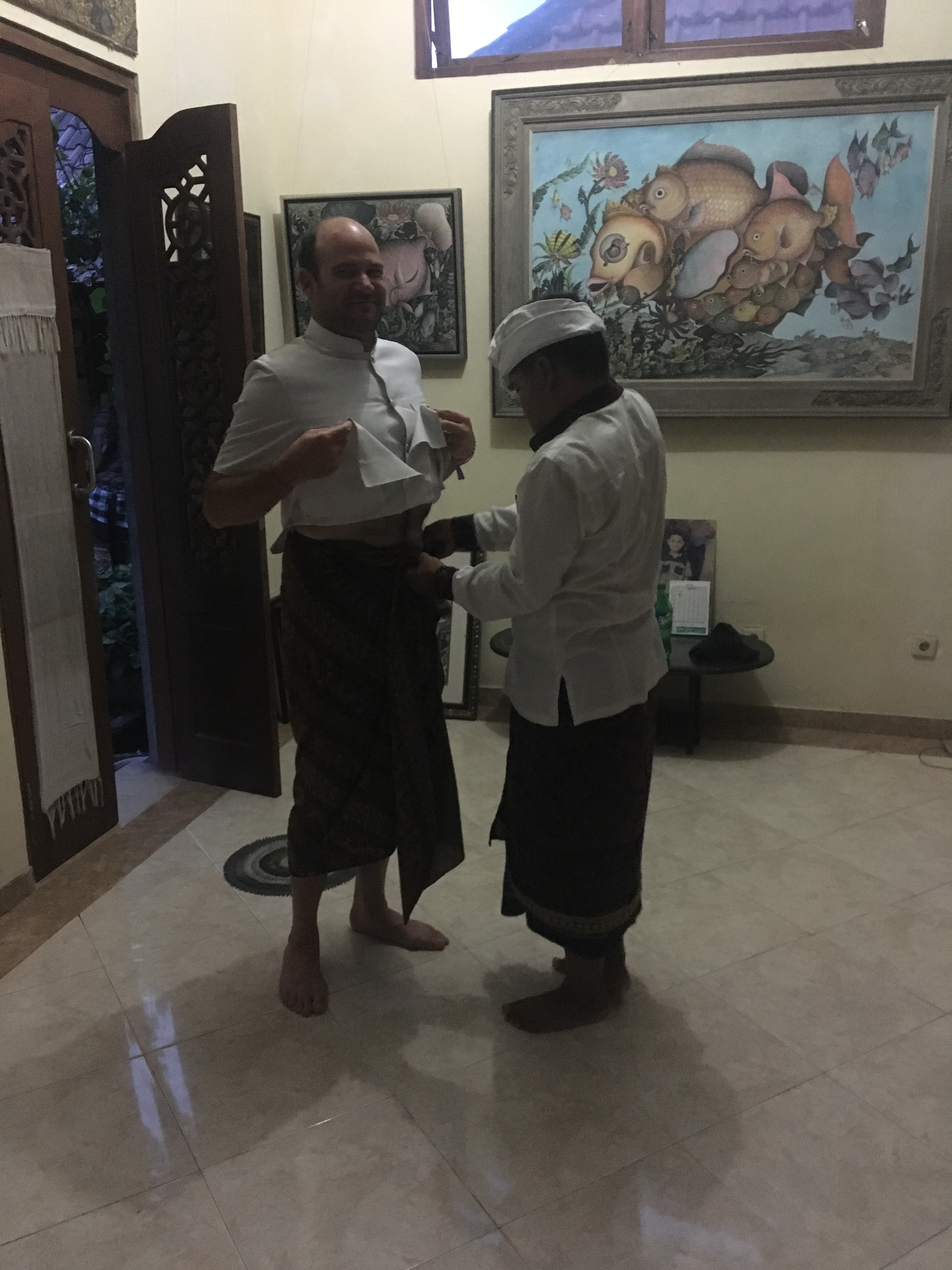
Don’t try to wear too small traditional Balinese clothes
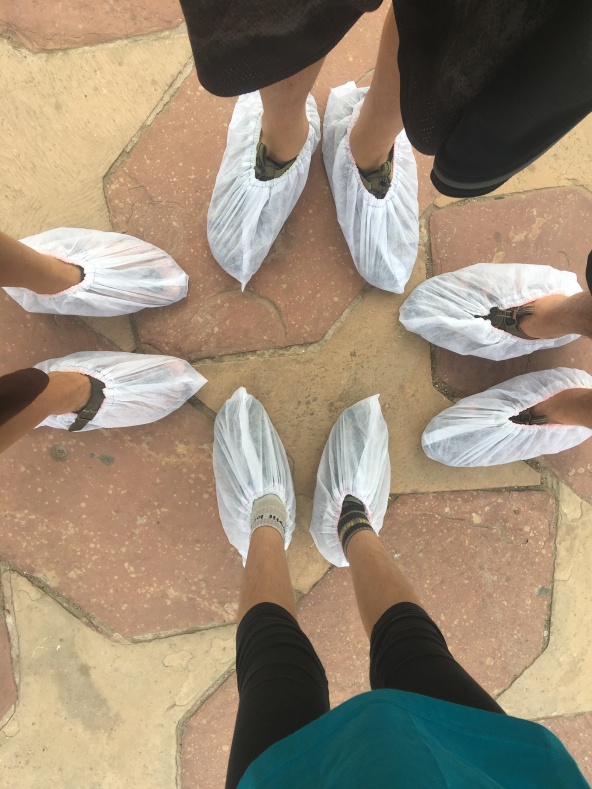
Don’t wear shower caps on your feet (and mismatched socks)
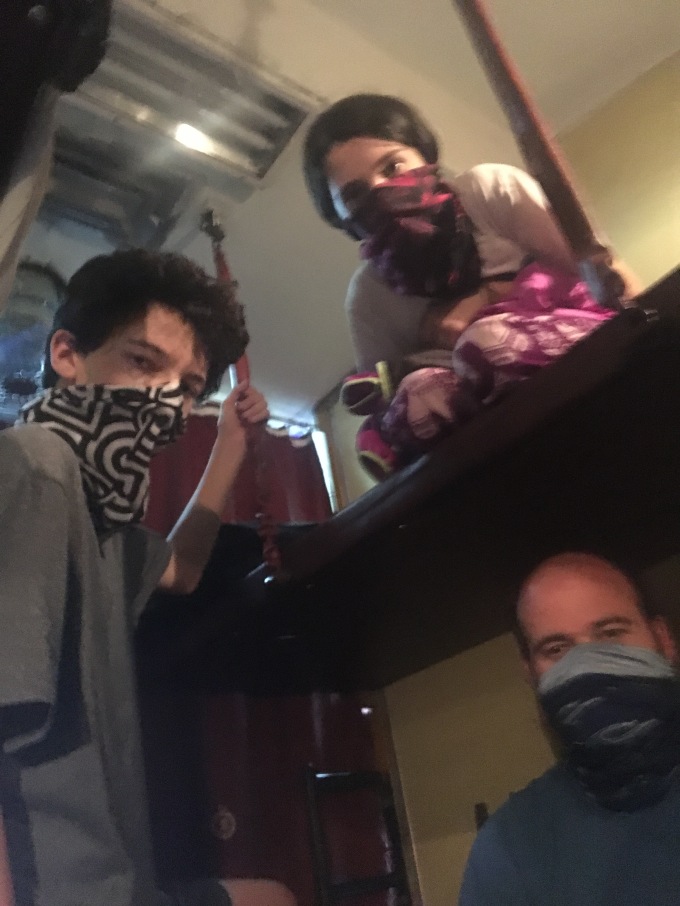
Don’t smell Indian overnight trains
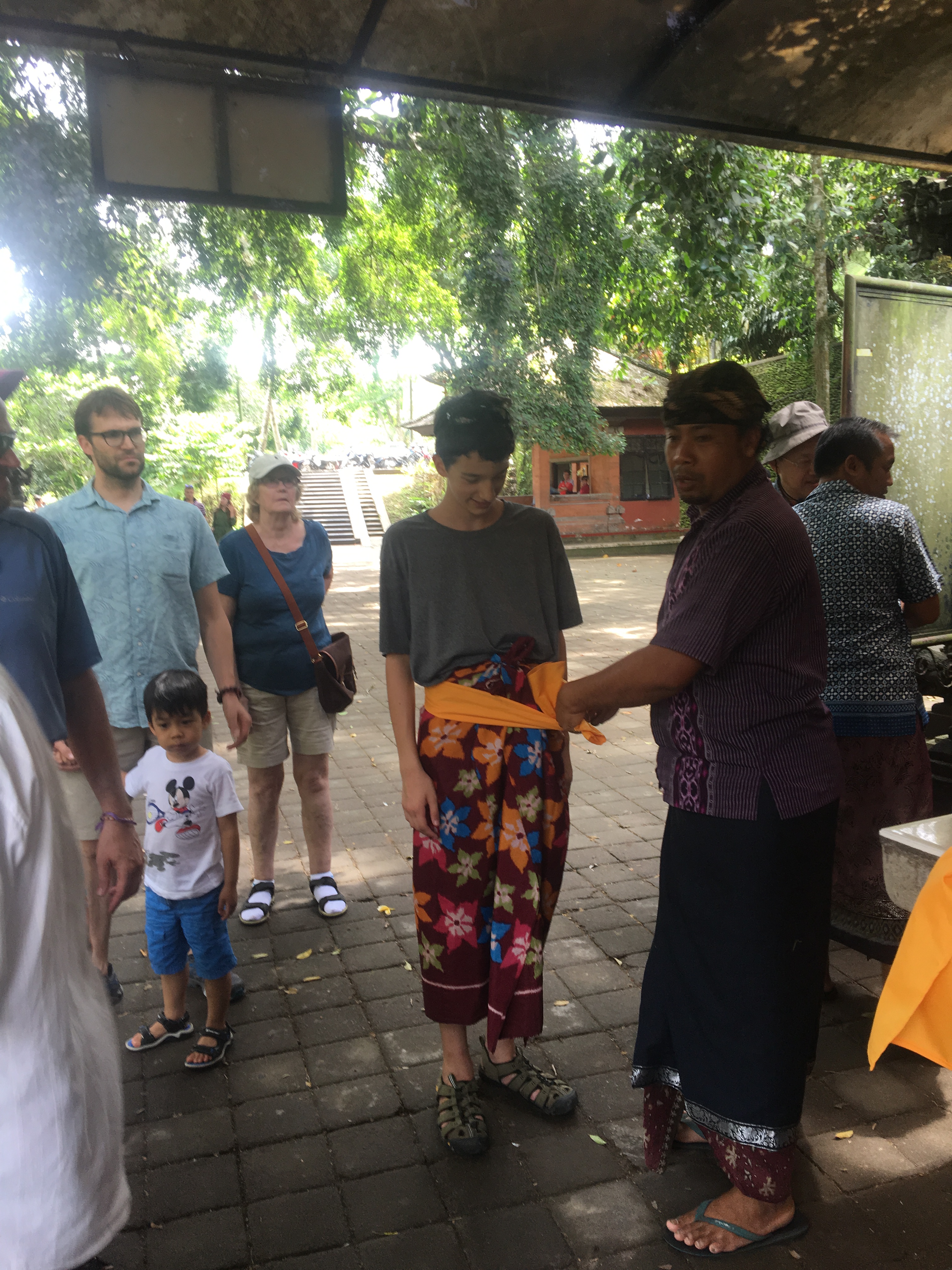
Don’t forget how to properly tie the sash on your flowered sarong (with Keens)

Don’t wear a rain poncho that makes you look like a square (while walking with an umbrella cane)

Don’t “babushka” it
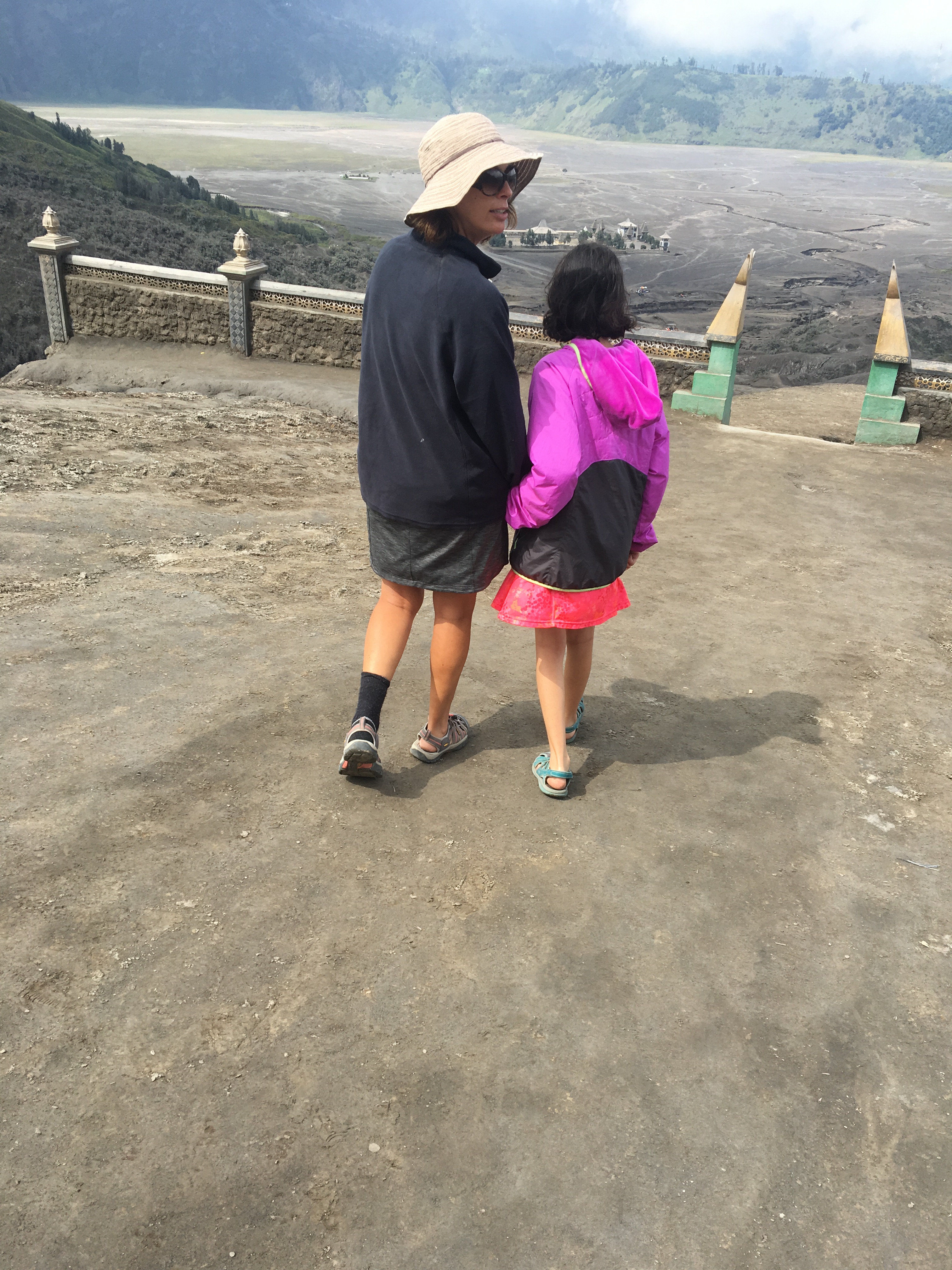
Don’t wear one sock (with Keens)
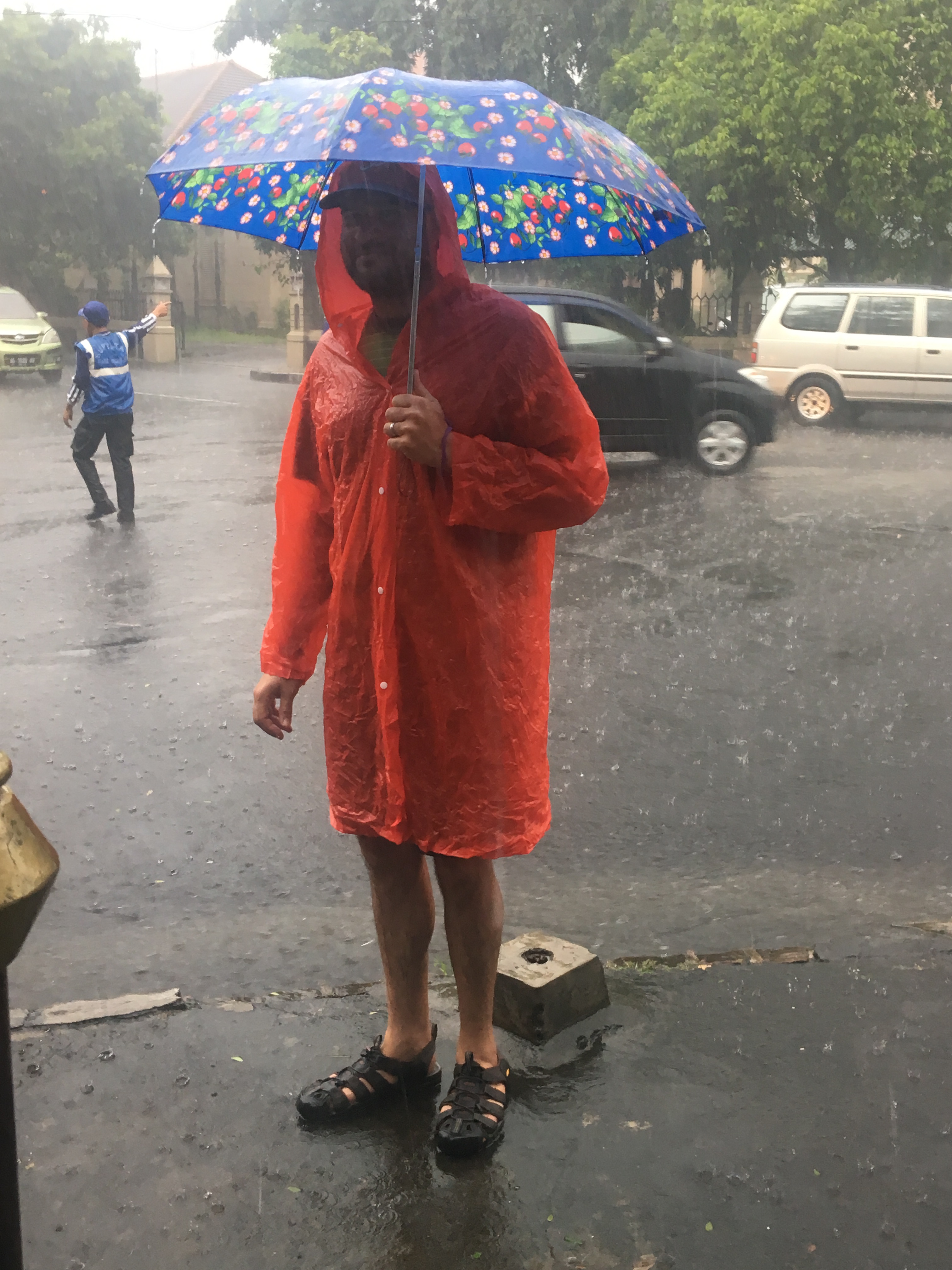
Don’t wear a red plastic rain coat intended for people half your girth (and Keens)
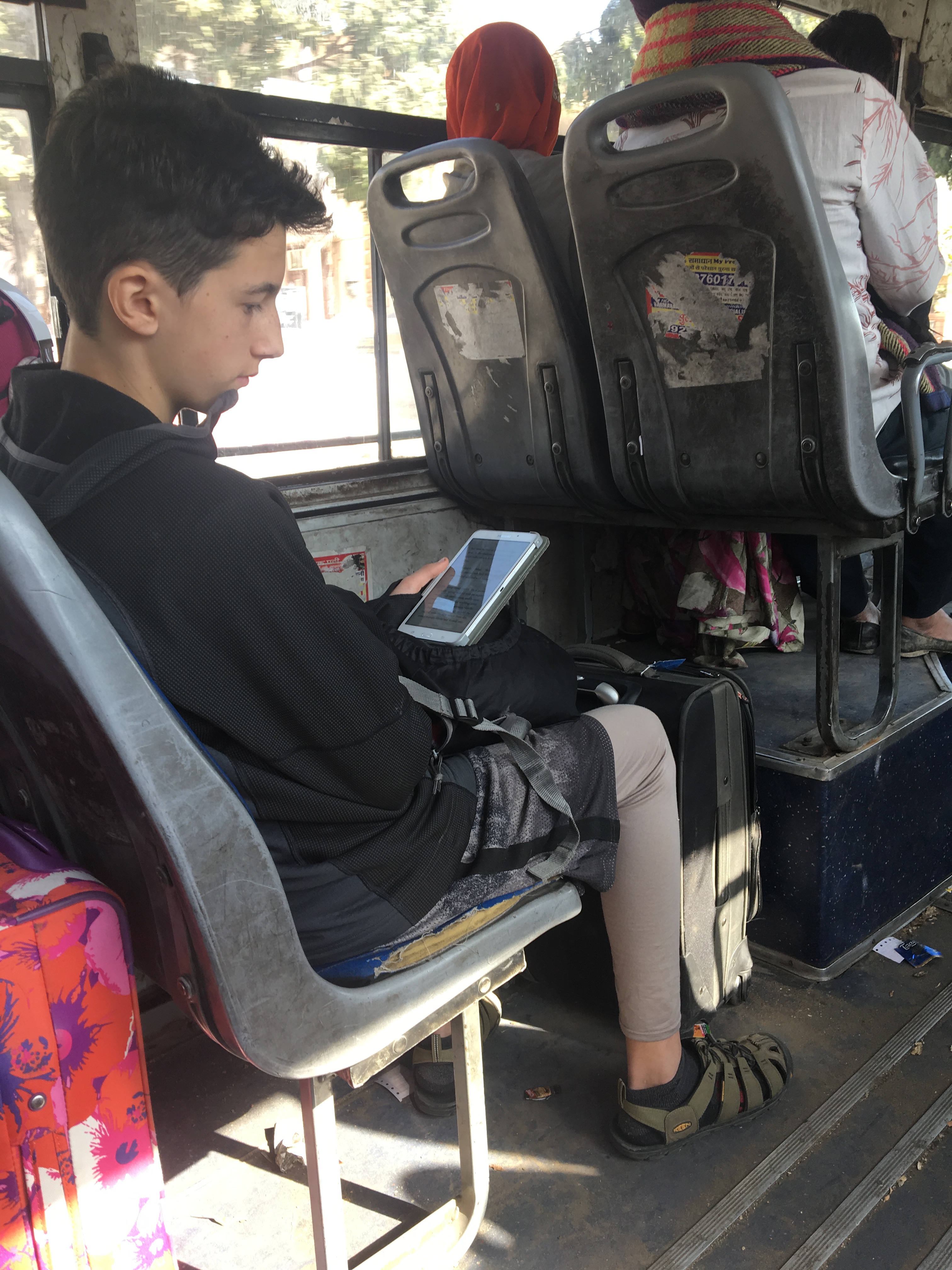
Don’t wear your mom’s long johns under shorts with ankle socks (+ Keens)
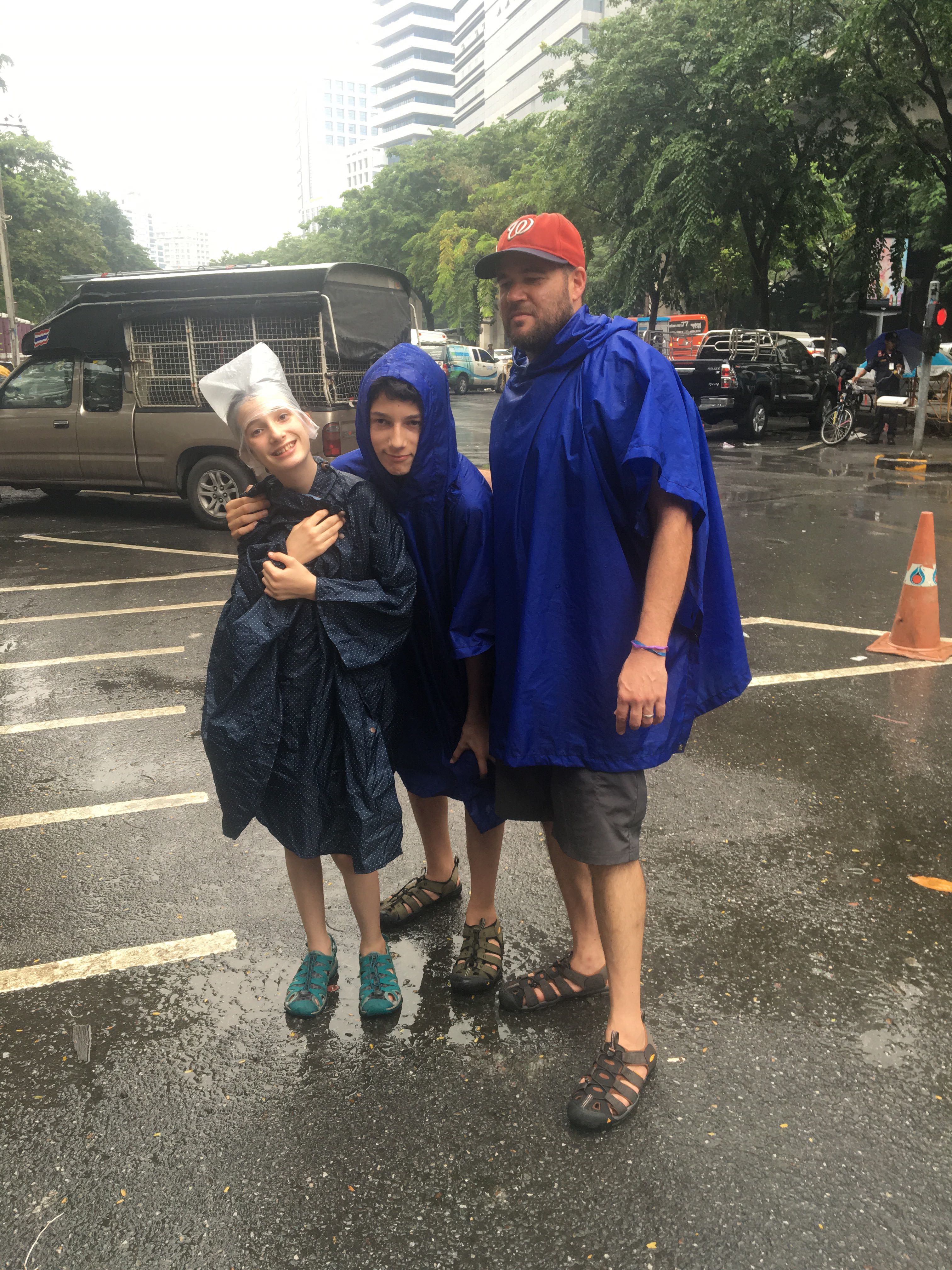
Don’t wear a plastic bag as a rain hat (& Keens)
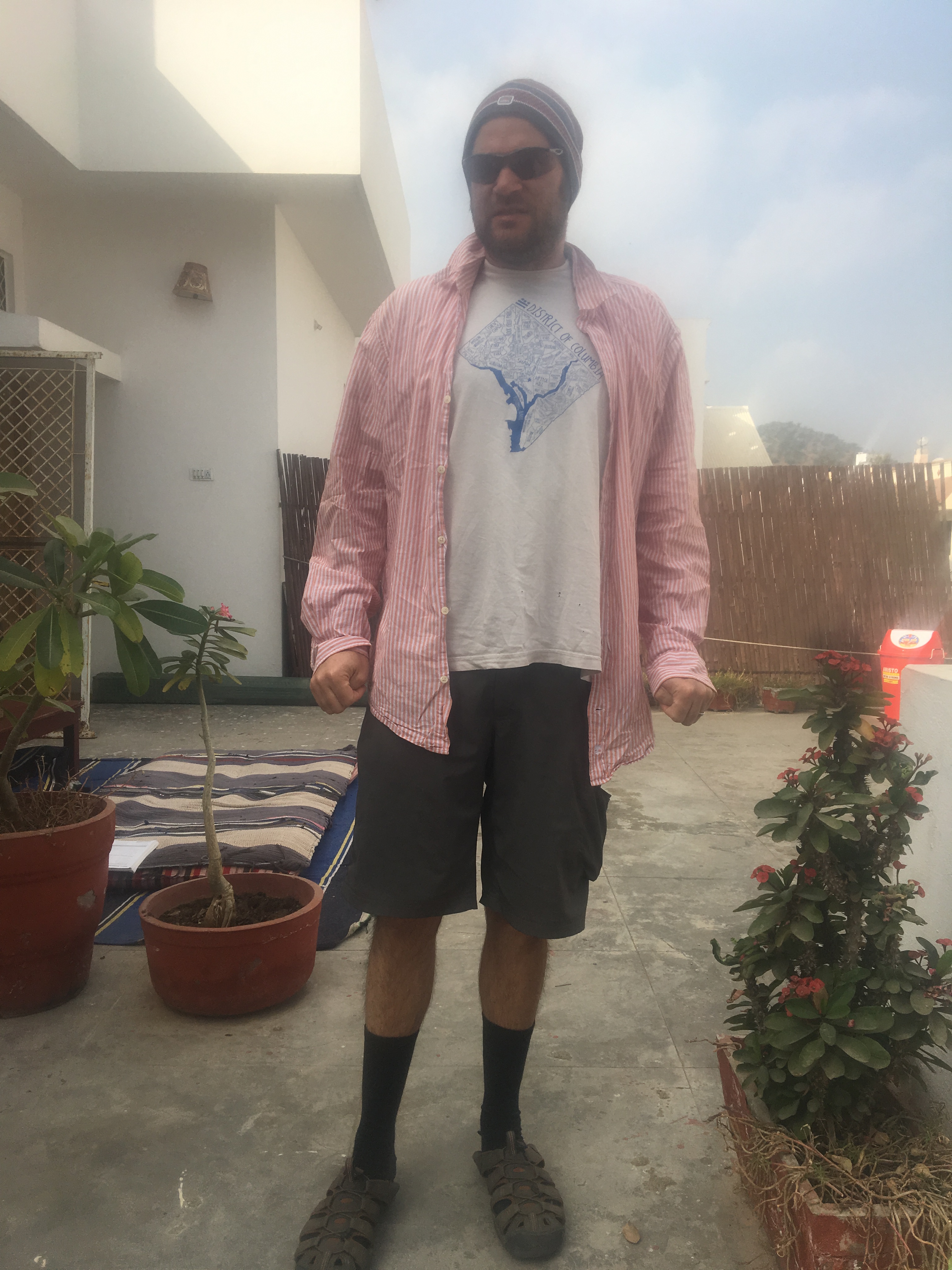
Don’t wear black socks with Keens and shorts (Zev says don’t wear black socks with anything)

Don’t wear your little sister’s shirt
And finally…

Don’t wear a bike helmet over a sun hat
Warsaw Outta Here
Check out Warsaw! It’s a relatively modern city. And, we learn why…Warsaw was completely rebuilt after the Nazi’s razed 85% of it in punishment for the 1944 Warsaw Uprising, a sure-to-fail 63-day attempt by the Polish resistance to liberate the city from the inside.
For clarification, the uprising wasn’t intended to be suicidal. The rebels figured they only needed to hold off the Nazis for about a month or so, until the Allies arrived to help them. Well,…guess what. The Allies didn’t do squat. They basically sat there, watching the Nazis kill thousands and thousands of Poles (civilians were not spared) saying, “Gee,…someone should help them” (Zev’s not bitter about this or anything).
Because the communists took over in 1945, and remained in power for 40 years, improvements to the city were obviously incremental. That’s why we say Warsaw is a relatively modern city.

And here is Warsaw today…relatively modern, no?
After settling into our final Airbnb apartment of Journey™, we head to a massive park for a pre-dinner chill. We hang out in Saxon Gardens with all that remains of the 18th-century Saxon Palace. This was Warsaw’s first public park and is modeled after France’s Versailles Gardens.

While sitting in the park, this monster of a dog appeared for our gawking:

Some of us think he is cute, others not so much – we find out it is a Black Russian Terrier, and he don’t smell so good
On the way out of the park we stumble upon three arches – all the Nazis left standing of the Palace. Coincidentally, since 1925, it houses Poland’s Tomb of the Unknown Soldier.

They still have a changing of the guard-type ceremony here once a week, like we saw in Athens. The guards are here but, unfortunately, we missed the elaborate ceremony…

Next to the tomb, we see the first of many of Warsaw’s Frederick Chopin benches. Chopin is probably Poland’s greatest composer and one of Warsaw’s most famous historical citizens.
The benches commemorate places around town that played a major role in Chopin’s life in Warsaw. Each bench explains the significance of its particular location to Freddie and plays some of his music.
You may be wondering what we’ve been eating here in Poland…though it doesn’t look super attractive, this is a favorite. Bigos, otherwise known as Hunter’s Stew, is meat, kraut, and cabbage. It’s very hearty and yummy, but we’re feeling pretty ready to wrap up the Eastern European food scene – we haven’t had Japanese food since April. 大変!
And, now it is time for our last free walking tour of Journey™ – this one is called Historic Center/Old Town tour. We are sorry to report that much beloved James of Rome fame has a rival – our free walking tour guy (F.W.T.G.) is the best! We learn so much from him about Warsaw’s Old Town starting with Kolumna Zygmunta, otherwise known as Sigismund’s Column.
It was King Sigismund who moved the capitol from Krakòw to Warsaw in 1596 after his amateur alchemy blew up part of the King’s Krakòw residence. The statute has been here, in one shape or another, since its erection by his son in 1644.

Zyggy’s at the top with the cross
Old Town, as you see it today, was almost totally rebuilt after the war, mostly based on 18th century paintings and all with private donations since the Communists certainly weren’t going to pay for it (the fact that they allowed the people to do this is quite noteworthy!).
The people of Warsaw did such a meticulous job rebuilding it from scratch (often with the same bricks when possible) that the Old Town was honored with a place on the prestigious UNESCO World Heritage List in 1980. (Final UNESCO visit of Journey™!)
F.W.T.G. takes us to the famous Kanonia Bell, a huge 17th century bronze bell. Legend has it that if you circle it three times in a very specific hopping fashion while making a wish, it will surely come true. F.W.T.G. tells us that it has worked for him…twice…
Only one person on the whole tour believed in the legend and did a dance around the bell while making a wish…

“I wish we get a free meal out of this somehow…”
Pictured below are the before (during Nazi occupation) and after pictures of this Old Town Square.

There was nothing left

Beautifully restored
E. Wedel Chocolate is also a big deal here – it is the oldest and most famous brand of chocolate in Poland. Maya got a fake version of E. Wedel from F.W.T.G. which he told us was pretty terrible but much cheaper. We tried it and he was right! He said if we want the real deal, go to E. Wedel – we only had a few days here so, believe it or not, chocolate was not a priority…maybe next time!

At this point, she doesn’t care that it is fake…
The Warsaw Uprising Monument was the last stop on our walking tour. This monument has been described as the most important monument of post-war Warsaw and is one of the most visited landmarks for foreign tourists. It’s pretty heavy stuff.

Made of bronze, there are two elements to this monument. The first, pictured above, is the larger, elevated part depicting a group of insurgents actively engaged in combat – running from a metaphorical collapsing building.
The smaller part of the memorial shows resistance climbing into (or, is it out of?) a manhole. Warsaw’s sewer system played a large role in the resistance movement across Nazi-held territory.

5,300 resistance fighters were evacuated through the sewers from Warsaw’s Old Town to the city center at the beginning of September 1944. It was a five-hour journey which started from Krasiński Square. Some people say they can’t imagine being on our Journey™. Well, we can’t even begin to imagine what that journey was like!

See the memorial behind us and F.W.T.G.
Our last day in Poland is dedicated to visiting POLIN -Museum of the History of Polish Jews. This is an amazing place to explore. We find several hours here are not nearly enough as it closes long before we finish. It is no wonder POLIN won 2016’s European Museum of the Year Award.
First of all, the building is gorgeous – super modern and light-filled. Check it out!

The museum is a hybrid public-private venture involving both national and local governments in conjunction with (massive) private donations (see the list here).

Check out the interior!
The museum starts with the beginning of Jewish history in Poland. It was hours before we even got to the World War II section. This place is thorough!

There’s some cool interactive stuff to do and…

You can dork out and pretend to be King if you’re that kind of guy
Out front there was a very moving temporary exhibit hosted by the International March of the Living. The International March of the Living is an annual educational program, which brings people from all over the world to Poland and Israel, in order to study the history of the Holocaust and to examine the roots of prejudice, intolerance and hate. Check out their website – it is an amazing organization!
There are 16 units with each panel composed of photos and text in English, Polish and Hebrew to increase widespread understanding. Below are just a couple of examples:


We cannot believe that the time has come. Today we head off to the airport. Feelings are mixed – some of us are excited to go home, but others are pretty sure we will miss the nomadic lifestyle that we’ve grown accustomed to…

Last (international) schlep of Journey with all of our belongings

Are we really getting outta here?

We just can’t believe it
Here we go…

Twelve hours later, the Ramblers arrive in Washington D.C., but apparently our luggage is still on Journey™…thanks, United.

Waiting in line to report our lost luggage!
Ramblers out!
Don’t have a Kraków, Man

Wait, where are we?
Here we are – we’ve arrived in our final country! We start in Kraków, a famous old city in Polska (Poland) where we will spend our last two weeks of Journey™ (at least the international part).
And, it’s pretty cool because both Jo and Doug are 1/4 Polish which makes the wee Ramblers also 1/4 (right?). Ironically, while Jo was rejoicing in her ancestry, Doug did not even know he was Polish – maybe he should not have been asking Jo to screw in that lightbulb….
We do the really fun walk with all our stuff from the train station to our apartment. Kids – they love it!
Our apartment is super cute and super duper small. Reminds us a little of our apartment in Japan (dude, if we only had a loft in Japan!)…Two people sleep in the loft, two on the sleeper sofa. At ~$30 a night, we make do…

Gotta get inventive about storage in these apartments
By now, all of you should know the Ramblers’ first move when arriving in a new city…
This free walking tour was pretty good. We learn what an amazing history Polska has – Kraków particularly so. In addition to the usual European back and forth, and the World Wars, especially II, Kraków also produced one of the most famous Popes, Karol J. Wojtyla aka St. Pope John Paul II.
Pope JP studied nearby at Kraków’s famous Jagiellonian University, but in 1939, the Nazis took over and shut the university down halting the Pope’s studies. In 1942, the Pope secretly studied at this seminary (above) that operated clandestinely during the war before returning to Jagiellonian University as a faculty member after the war.
Casimir the Great, King of Poland in the 1300’s, opened Jagiellonian University in May 1364 making it Poland’s oldest university. Not only that, Casimir inherited a relatively weak country devastated by wars, and turned it into a prosperous and wealthy one.
He also encouraged Jews to settle in Kraków and enforced equal rights and privileges that were already granted to them – a rarity at that time. Hence, the Jewish area inhabited by them became known as Kazimierz.
Another famous Jagiellonian student? Nicolaus Copernicus – the astronomer who advanced the idea that the sun is the center of our universe (heliocentrism) into accepted, common knowledge (except, if you’re Mike Pence).
St. Mary’s Basilica is one of the buildings that dominates the main square of old town. The church was actually founded in 1221 but construction on this basilica began in the 13th century finishing in the 14th century. It is a shining example of Polish Gothic architecture.
Every hour, on the hour, a trumpeter opens the top window in the larger, north tower and plays Hejnał Mariacki, the Polish anthem, also known as St. Mary’s Trumpet Call. After a few notes, the tune sounds as if it abruptly stops in the middle…

Kinda looks like king and queen chess pieces
Legend has it that an arrow shot by an invading Mongol around 1241 landed in the trumpeter’s throat halting his play mid-tune, hence the odd ending. Our tour guide tells us this is just a made-up legend more recently debunked by historians. There are other theories about the anthem’s traditionally strange conclusion but no one really knows the reason.
As for the towers, another Polish legend says that two brothers, Kraków’s best builders, were hired to build them. The older brother built the south tower while the younger handled the north one.
As construction progressed, it turned out that the south tower was clearly taller than the north. In a fit of jealous rage, the younger brother killed his older sibling and ordered the unfinished south tower crowned with a small dome. He then proceeded to complete his, now taller, north tower according to plan.
However, consumed by guilt over what he had done, younger climbed the tower on the date of consecration, admitted to the gruesome crime, and jumped. Why do these European towns always have these grisly tales?
The interior of the basilica is pretty awesome…check it out.

Some of the best stained glass we’ve seen on Journey™

Another interesting, historical fact about Kraków is that the most famous landmark of the old town square is a massive building called Cloth Hall.

No H&M in here (but, don’t worry, H&M everywhere else)
Many believe Kraków became the important historical city that it is because the king centered the city around trade, instead of centering it around a church. So, this huge building was probably one of the world’s first malls. This made Kraków one of the most important centers of trade in the region.
And it is here that Maya finally gets to cross something off her Journey™ bucket list.
Anyway, remember the kid with no suitcase, two broken backpacks and a busted hat with the legal clip holding it together? Well, now he has the glasses problem. Poor Zev!

What’s up my dudes?
Next stop on the walking tour? Famous Polish artist, Jan Matejko‘s house. Jan painted massive oil on canvas paintings of historical events. The tour guide told us a story that Jan’s house was called the house of four, ugly faces.

See the three ugly’s here
The story goes that Jan wasn’t exactly makin’ bank with his mural sized oil canvases of historical events and so his wife used to stand at their balcony above the front door and yell at Jan to go get a real job, thus she was the 4th face…
The tour ended at Wawel Castle, a pretty amazing castle complex on a hill above the rest of Kraków – probably the most important historical area in the country built by you know who…Casimir the Great.
Inside the castle complex lies Wawel Royal Cathedral, a crazy architectural hodge-podge.

The first cathedral church at Wawel was probably built around the year 1000!
We think the story is that the place has just been here so damn long, every historically important architectural era had time to add their own piece resulting in a very bizarre site.

More cathedral
Another legend (again with the legend?) explains the presence of enormous at the west entrance to the cathedral…

See the huge bones chained up on the left
These bones are said to be Smok Waweleski’s, the local dragon. He terrorized Kraków until, according to legend, he was finally killed by a local hero who fed Smok a lamb laced with sulfer. This made the beast so thirsty that he drank water from the river until he exploded. Gnarly!
As we were headed to a restaurant recommended by our walking guide tour, we came across this parade, protest, whatever you call it. We tried to figure it out and asked our server, but all we gathered was it’s certainly Catholic!
We learn that Poland is anywhere from 85-95% Catholic depending on what source you use. Apparently the Germans and Russians left Poland almost completely homogeneous – almost everyone is white, Polish and Catholic.
Anyway, in addition to being super Catholic, one other thing that is certain in Kraków is they really like beer!

Doug’s right at home in Kraków (Editor’s Note: objects in mirror are closer than they appear)
Okay so on to the Jewish history which is a big part of why the Ramblers ended up here in Polska – unexpectedly, the Jewish district in Kraków presents a lot of different feelings for us. On one hand, after the Germans murdered 90% of Poland’s Jews (which we learn were ¾ of Europe’s Jews at the time), it is nice to see a revival of and interest in Jewish culture.
We visited the Jewish Community Center here in Kraków, and it’s booming (and we got a cute poster), which is very new considering the remaining Jews who were not already killed left for obvious reasons – the Poles and the incoming Communists weren’t so pleasant either. So, it’s great to see the newfound popularity.

Really old temple
But, on the other hand, something feels fake and not right. Jo inquired as to whether the many many in-your-face Jewish restaurants are even owned by Jews. We are not surprised to learn that they are not. So, it is kinda inauthentic and a money maker, yet, at the same time, many of the tourists who come here are Jewish themselves. It’s a strange yet very interesting dynamic that we are still trying to work out.

Of course, another walking tour we did (in addition to Old Town and Foods of Kraków where we unknowingly ate horse sausage) was the (free) Jewish walking tour! One place we visited of great interest to us was this apartment building which was used in the movie Schindler’s List.
We (except Maya) watched this movie while we were here and then visited Schindler’s factory which is now a museum featuring life in Kraków under Nazi occupation 1939-1945 – a fascinating but overwhelming place!
We immediately remembered the scene filmed here where a little Hitler Youth in training helps to hide a woman he discovers when he realizes it is his classmate’s mom.
Another stop on the tour was this sculpture:
In 1942, Jan Karski successfully escaped Europe to meet with the Polish government-in-exile (in London) along with other Allied leaders, including FDR. He was one of, if not the first to present credible evidence of the extermination of European Jews by the Third Reich.
Unfortunately Karski’s report largely fell on deaf ears. In 1944 he published a memoir of his mission titled My Report to the World: The Story of a Secret State, which was a wartime bestseller.
He lived out his life teaching at Georgetown University for 40 years, and was awarded numerous honors including the Order of the White Eagle (PL), the Silver Cross of the Virtuti Militari (PL), the Presidential Medal of Freedom (US). He is recognized by Yad Vashem as Righteous Among the Nations. Some of the Jews he saved that escaped to Israel testified to his amazing feats of humanity.

Sadly as with all of Europe, antisemitism exists here too
Another spot on our tour was the Square of Empty Chairs which is a memorial dedicated to the thousands of Jews murdered by the Nazis. This is the site of many a massacre during the existence and then liquidation of the Kraków ghetto where Jews were rounded up and put on trains – deported to concentration and death camps – it’s a very difficult but necessary experience for us.
We learn that each of the seventy empty chairs made of bronze represent 1000 Jews who were taken to their deaths. While we here, the chairs had crocheted coverings on them, but that is not part of the regular memorial and our guide didn’t like them.
One of the epic massacres was also depicted in Schindler’s List. Again, since it was filmed here, the eeriness of being here right after is a bit much, but helps to install the proper somber mood.
Thankfully we get to hear an uplifting story to balance the Nazi’s savagery. Right next to this spot is Tadeusz Pankiewicz‘s pharmacy. Now a museum dedicated to awesome Tadeusz Pankiewicz, a Roman Catholic Pole and the only non-Jewish resident of the Kraków ghetto.
He convinced the Nazis to let him stay here with his pharmacy to try to control the rampant disease in the ghetto. While appearing to operate a pharmacy, he employed Jews, helped Jews, allowed Jews to have secret meetings, smuggled Jews and supplies out of the ghetto, and documented the unimaginable horrors of everyday ghetto life so no one could ever deny what occurred here.
Then we saw this – part of the original ghetto wall still standing as a memorial to the Jews who were trapped inside…

The guide tells us that the Nazis purposely made the wall in the shape of Jewish tombstones
On a happier note, this bridge really blew us away. Check it out!
And, by the way, if you ever find yourself in Kraków, you must go to this bakery called Vanilla. We went several times and it is amazing.

One day, we visited the famous Wieliczka Salt Mine, right outside of Kraków.

Jo’s in my glasses
In the 13th century, rock salt was discovered in the town of Wieliczka. Soon after the discovery, the first shafts were dug. Nowadays, the total length of the passages adds up to 178 miles! Less than 2% of the mine is open to the public. To get to the shafts from the surface, one must descend many many stairs.

Many, many, many, many, many, many…

A statue of Nick Copernicus made out of salt, who visited the mine as a student way back in the day

Salty!

Salty Cathedral – even the light fixtures are made of salt!

A model of Da Vinci’s Last Supper made out of rock salt

Everybody’s favorite (salty) Polish Pope

This salt guy looked just like Zev – can you believe it?
Unfortunately, no visit to Kraków is complete without visiting the horrific museum of the Auschwitz-Birkenau concentration/death camp complex.
Truth be told, after Budapest, Prague, the rest of Eastern Europe, and all our other Holocaust studies, we weren’t dying to see this place but felt it was our responsibility. Thankfully, we all decided that just Jo and Doug would visit while the lil’ Ramblers took a day off.
Jo and Doug really wish that more people took the website’s advice about not bringing children under 14 to this terribly barbaric place.


Words cannot describe what Jo and Doug learn at this museum. Even after all our studies to-date, nothing could make sense of what went down at these industrial-sized killing machines and the camps that ran them. Never forget!

Zev Stuffs His Face
The Damn Ham Scam (Prague Blog)
 (Most) European train travel rocks!
(Most) European train travel rocks!
On our first day in Prague, we arrive early at the free walking tour meeting place in the heart of old town to grab some grub. We cleverly avoid the “over-priced/touristy” restaurants and are excited to see some food carts!
Perfect – it will be cheap and without the unnecessary restaurant fanfare, and it smells so good…they’re roasting pigs right here!

So we order a roasted ham plate along with a bowl of mashed potatoes with ham and ‘kraut, and a sausage.
 Wait, what?
Wait, what?
So, the great Prague ham scam goes like this – hungry, unsuspecting tourists approach friendly-appearing food stalls. The menu lists items at seemingly reasonable prices, but what’s not that clear is the prices are by weight, not per plate.
The unknowing mark (read, starving Ramblers) checks the menu – all seems cool and smells good. Yes, we will have a ham portion, a bowl of potato/kraut/ham mash, and a sausage with bread, why not?
Bam! (You’ve been hit by – you’ve been struck by – a smooth ham scammer!) You’re nailed by the ham scam. They cut a hock of ham the size of which is enough for a small Czech army, a massive (and very heavy) bowl of ham/’tater/kraut, get your sausage, and then they talk you into two beers because, y’know, you’re in Prague, you dumb Rambler!
Well, instead of a reasonably-priced lunch, you’ve got multiple kilos of ham and ‘tater mix – more than you’d ever need. And, you’re stuck with a bill of 1,376.00 CZK (Czech Koruna), a.k.a. $60.19 – doh! Oh, and you have to stand to eat it all…
 Ham Scam products on the table
Ham Scam products on the table
With our ten pound bag of ham and taters to-go (we’re determined to make another meal out of this), we head to our walking tour.
Soon after the tour begins, Lyle, our Cleveland-born guide, tells the whole group about the ham scam…we’re both glad and sad to hear this as we’re not alone, but c’mon, after nine months of Rambling, we’re the ones suckered by the ham scam!? Oy…
 Say “cheese” free walking tour dorks
Say “cheese” free walking tour dorks
Our first stop on the walking tour is this amazing Gothic cathedral,
 Hogwarts, much?
Hogwarts, much?
Church of Mother of God before Týn. Construction of this crazy building began in the 14th century and likely took a hundred years, give or take a bunch. During that time, different Christian sects ruled Prague resulting in a mix of styles. But, the most interesting part of the church is that if you look closely enough, the towers are different sizes (see above).
Lyle tells the Ramblers the builders’ excuse for messing them up, but we don’t remember what it was – guess it wasn’t memorable. Anyway, Lyle says no one else believed them either, the Czechs just figure they had too many OTJ beers.
Of course, around the corner from this church is one of Europe’s iconic images. Lyle explains the details, inner workings, and legends behind this famous astronomical clock. He also tells us that the “show” the clock presents on-the-hour is well-known as one of the most overrated tourist traps in the world.

Lyle says that this crazy clock was first installed in 1410, making it the third-oldest astronomical clock in the world, and the oldest one still operating. The clock was heavily damaged during World War II especially during the May 1945 Prague Uprising. Apparently, later on, it took years to find people who could properly repair the complicated inner workings of this ancient clock.
We also learn that much of Prague’s old buildings survived the war because Hitler had a special affinity for Prague, thought it was beautiful, and even considered retiring here… guess that didn’t work out.
The walking tour also takes us through Josefov, Prague’s old Jewish Quarter and ghetto. For the second city in a row, we see refurbished old Jewish quarters that are now all fancy or hip. The only thing they are missing now? Actual Jews.
The Prague Jewish Quarter is full of high-end fashion stores and old synagogues.
 The Spanish Synagogue – which is the newest of the old synagogues here was built in 1868 on the site of what was the oldest synagogue (12th century).
The Spanish Synagogue – which is the newest of the old synagogues here was built in 1868 on the site of what was the oldest synagogue (12th century).
The other impressive sights are the old buildings including several old synagogues that survived Nazi occupation. Instead of, like in Budapest, where the synagogue survived because the the Nazi high command decided to live there, these old synagogues survived because Hitler filled them with some of his spoils he stole from the Jewish population. He planned to create a “Museum of an Extinct Race” here in the Jewish Quarter, that also went the way of his retirement plans.
Anyway, as you may have surmised on Zev’s European Top 10, he (and some others) are getting pretty sick of Eastern European food and dying for…yup, you guessed it – Asian food. Well, we soon discover there is a very healthy Vietnamese population here in Prague (from their former Communist connections) and along with Vietnamese people, comes Vietnamské food! Chúc ngon miệng!
 Ahhhh, thank god!
Ahhhh, thank god!
We learn that Vietnamese people began settling here during Communist times, when they were invited by Czechoslovakia as guest workers. We go here three times during our week in Prague. Bún chả anyone?
 It’s like home, sweet, home…chopsticks, sriracha and all
It’s like home, sweet, home…chopsticks, sriracha and all
 This was our neighbor at dinner, it’s not part of the walking tour
This was our neighbor at dinner, it’s not part of the walking tour
During our walking tour, we learn about Operation Anthropoid, the World War II mission to successfully assassinate SS General Reinhard Heydrich – the super uncool Nazi in charge of Prague during occupation and designer of the Final Solution. A few days later, we find this exhibit in a park.

Coincidentally, one of the Ramblers watched a pretty good movie about this exact mission on one of Journey™’s several plane rides.
We hoof it up to Prague’s Castle grounds to this extraordinary Gothic cathedral called St. Vitus. After seeing so many cathedrals in Italy free of charge, the Ramblers take issue with having to pay an entry fee. So, we admire it from the outside. Isn’t it amazing? It’s the largest and most important church in Prague!

Prague Castle was most likely originally founded around 880. According to the Guinness Book of World Records, Prague Castle is the largest coherent castle complex in the world, with an area of almost 70,000 m² – it is also, of course, a UNESCO World Heritage site, with buildings of various architectural styles from 10th century Romanesque-style buildings through Gothic modifications of the 14th century.
Besides being the site of several defenestrations (a favorite Czech past time), the castle has been the seat of the President of the Czech republic since the early 1900’s.
On March 15, 1939, the Czech President suffered a heart attack during negotiations to hand his nation over to the Germans after which Adolf Hitler spent the night in the Prague Castle, “proudly surveying his new possession.”
During the occupation, Prague Castle became the headquarters of renowned a-hole (see above) Reinhard Heydrich. The story goes that while here he put the Bohemian crown on his head. Old legends say foreign occupiers who wear this crown are doomed to die within a year. And ‘lo and behold, less than a year later, Heydrich was dead after Operation Anthropoid. Actually, Heydrich likely would have survived the shooting, but he refused to take anything other than German blood and it took too long to get special blood delivered to Prague.
After liberation, the castle became the head of state.
It’s kinda weird up here, they have guards dressed up in old armor costumes…
On the way down, the Rambler Simpsons fans can’t believe their eyes…is that really a Kwik-E-Mart?
 Please pay for your things, get out, and come again!
Please pay for your things, get out, and come again!
 Can’t Get Enough of that Wonderful Duff
Can’t Get Enough of that Wonderful Duff
The Mirror Maze otherwise known as Zrcadlové bludiště Petřín was built in 1891 as part of the Prague Jubilee exhibition. It’s not exactly what we thought it would be but the lil’ Ramblers had fun!
 The many Mayas
The many Mayas

So being a huge Beatles fan, Zev is excited to see the famous John Lennon Wall. We make the schlep, and, well, he just isn’t happy with what he sees… Zev, what is the problem?
 This just isn’t cool…
This just isn’t cool…
Zev: I don’t really know what I expected, but I anticipated the Lennon wall being more… Lennon-y. I could really only link about 10% of the graffiti with John and/or the Fab Four. There is some Czech patriotic graffiti, and a fair bit of antiwar scribbling, but a good 50+% was just illegible and chaotic in general.
 We like this part of the wall!
We like this part of the wall!
After the disappointing Lennon wall, this was fun to see!

This motorized sculpture/water feature is great – the streams change and move back and forth – the base is a map of the Czech Republic. We watch for awhile but, after a few minutes, the urge requires us to depart.
In Prague’s Wallenstein Garden, we were enraptured by a peacock who was really putting on a show…

Everyone was amazed except for the intended audience. Prague is full of sculptures and art. We discovered these giant weird sculpture animals with an unbelievable view of Prague in the background.
And now for a brief episode of Doors of Prague starring Maya…


******
In a huge restaurant called Lokál Dlouhááá, Maya has what they call “chicken soup with semolina dumplings” a.k.a. matzoh ball soup. Why not just call it what it is, people? We are learning here that, as June always said, what we once thought was “Jewish food” is really just Eastern European food.
 Enjoying her “semolina dumplings”
Enjoying her “semolina dumplings”
In case you weren’t aware, Ramblers are only human. Every now and then, we need a day off. What better place to do this than a gigantic pool complex.
 Maya has some mad jumping skills
Maya has some mad jumping skills
This place, Podoli Swimming Pool, has a huge lap pool (no bathing cap required), and a large, super-deep pool with platforms for diving. Even the “shallow” end of the deep pool is something like three or four meters (12 to 15 feet).
After a day of fun, it is time to get back to business. For us, that means visiting Terezín, a concentration camp established by the SS during World War II in a little rural village in German-occupied Czechoslovakia, about 30 miles from Prague.
 This German phrase, meaning “work sets you free,” appears on the entrance of Nazi concentration camps as a way to deceive the people that they will eventually be free
This German phrase, meaning “work sets you free,” appears on the entrance of Nazi concentration camps as a way to deceive the people that they will eventually be free
Tens of thousands of people died at Terezín, some murdered, others dying from malnutrition and disease. More than 150,000 other people (including tens of thousands of children) were held here for months or years, before being sent by train to their deaths at Treblinka and Auschwitz in occupied Poland, as well as to smaller camps elsewhere.
We learn about how Terezín was used as propaganda designed to fool the Western allies. The Nazis publicized the camp for its rich cultural life even fooling the Red Cross into telling the world how these camps are safe places for Jews.
A collection of children’s drawings made during art classes organized by artist and prisoner of the camp Friedl Dicker-Brandeis (1898–1944) blow our minds. Nothing could be more emotional than children’s drawings illustrating their lens by which they viewed their existence here.
As part of what was mostly a clandestine education program for children at Terezín, the art classes were very specific in nature and served as a kind of therapy helping the children to endure the harsh reality of ghetto life.
We check out a well-preserved, makeshift, secret synagogue. It is amazing that the prisoners still managed to keep some semblance of their Jewry in these horrific conditions. Truth be told, we learn that the Nazis may have known quite a bit about the goings on but let them be to quell any potential uprisings.
As mentioned in our previous blog-post, Jews put rocks on graves to honor the deceased, but we’ve never seen anything such as this gigantic rock memorial.
The rock is supposed to reflect a giant Star of David in the base, but we couldn’t find it – still it’s a very moving memorial honoring all the Jews who senselessly perished during the Holocaust.
We added rocks to the plaque below…

The Many Cats of Journey
ZEV’S EUROPEAN TOP TEN
Hear ye, hear ye!

I’ve always wanted to say that. I know you’re itching to get to this next issue of my Top Ten, but before you do, I have an announcement to announce. The food in Italy and Greece was mostly bomb-diggity, but from Croatia onward, the food is slightly underwhelming.
Therefore, instead of my usual Top Ten, this is a Top Eight. Unlike my Southeast Asian Top Ten, but as with my Japanese Top Ten, these excellent European eats are ranked in no particular order.
********************************
1. Chimney cake with ice cream ~ Budapest, Hungary

Chimney cakes are basically Romanian churros (which are basically Mexican donuts), but I’ve seen them now in Budapest, Prague, and Krakow. Sweet dough is wrapped around a rotating spit, roasted in a hollow cylindrical shape, and dusted with cinnamon.
You can even get these delicious cakes with soft serve ice cream or whipped cream inside, if you’re trying to put yourself in the hospital. The irresistible smell of them baking can be smelt for what seems like miles around, so when looking for chimney cakes, simply follow your nose.
 Thanks for holding this for me while I type up my review
Thanks for holding this for me while I type up my review
******
2. Profiteroles ~ Vietri sul Mare, Italy

When the Ramblers were perusing the many freezers full of desserts in Eco del Mare, we saw what Jo described as “dung balls”, but were actually chocolate-shell-coated-spherical somethings. Not deterred by Jo’s immature and kinda gross sense of humor, I got a bucketful, topped with whipped cream.
After heading home to the cave, I attacked them with a spoon, and realized that they taste like chocolate-covered, custard-stuffed doughnut holes. My love for a dessert was never stronger than that moment in the cave, with chocolate schmeared all over my face, and a belly full of profiteroles.

******
3. Neapolitan Pizza ~ Naples, Italy

It is often said that Napoli is the a-very best pizza in the world. I don’t know about the entire world, but it sure is amazing. A thick crust, but not too doughy, and with fresh, flavor-packed ingredients. Amazing, but is it the best pizza I’ve ever had?
Prior to Journey™, the best pizza that had ever entered my belly was Oregon’s very own Double Mountain. It’s cooked at about 700°, for a short period of time with a very thin crust. So when comparing Double Mountain and Dal Presidente, or other pizza I had in Naples, I would say that it’s apples and oranges, but both are delicious!
******
4. Dihovan Sausage ~ Dihovo, Macedonia
Because our time in Macedonia was spent in a tiny village, all of our meals were taken at Villa Dihovo. Our host, Pece, is very deep in the slow-food movement (he’d fit right in with Portlanders), and slow food in Macedonia means homemade sausage.
These sausages were salty, smokey and not dry in the slightest. I suppose the secret is that Pece uses both pork and beef in his sausages, and that’s what provides the diverse and fascinating flavor. Plus, using cow intestines for the skins instead of plastic is a legit improvement – the only time in this lil’ Rambler’s opinion that using organs in cooking is an improvement.
******
5. Tsipouro ~ Volos, Greece
Perhaps you recall our Volos blog where I discussed “tsipouro”, which is both an alcoholic beverage and an eating style. You order an alcoholic beverage (beer, wine, or tsipouro) and based on your choice, you are brought an assortment of small plates, rather like Spanish tapas. For example, you order wine, you get meat plates. If you order tsipouro, you get seafood.
We had:
- fried anchovies with sautéed greens
- pasta salad
- cuts of grilled meat
- beets salad
- grilled shrimp
- some sort of seafood risotto served in clam shells
- fried squash slices with tzatziki to dip
- fish and chips, and much more.
Unfortunately, we have yet to discover tsipouro outside of Volos, so needless to say that I shall be returning to Volos someday. (Editor’s Note: Zev didn’t actually imbibe any of the alcohol. But, in case you were wondering, tsipouro is like grappa or ouzo, with an absinthe/licorice taste unless you order it without absinthe in which case it probably tastes like rubbing alcohol.)
******
6. Gyros ~ Greece

Gyros. One of my favorite foods, and luckily Portland has many a gyros cart. Before Journey™, I enjoyed gyros, but I never knew what gyros were like in their homeland of Greece. So, when I visited Greece and stuffed my face with gyros, I was surprised to discover that…Portland gyros aren’t very different from real Greek gyros!
This may be a shock to you all, but the only real difference between American and Greek gyros is that Greek gyros never have hummus. Hummus isn’t actually Greek at all. No matter what hummus’s ethnicity is, I still like it in my gyro.
So sue me.
******
7. Suppli ~ Rome, Italy

Ahhh, Suppli…The latest kulinary kraze to hit Rome is street food. And, the most popular of this new-fangled street food is suppli. Suppli is kinda hard to explain, but I’m pretty sure you just get some rice and tomato sauce and melted cheese, mold it into an oval, and deep-fry it. They taste like something that Italian-Americans should eat on Super Bowl Sunday.
******
8. Gelato de Teatro ~ Rome, Italy

When we were in Roma, Signe’s mom Michele (Cedarwood friends who have spent a lot of time in Italy), sent us to a gelato place that she claims is “the best in Rome”. Well, we went, and… it was absolutely amazing!
The gelato here lacks the neon-colors of the gelato you see by the Trevi fountain, which means that the ingredients are real, and without food coloring. For instance, the pistachio is not neon-green, but a pleasant earthy color.
My tiramisu flavored gelato was supreme, with real Italian caffè. We visited several times during the course of our stay in Rome, and each time my calzinis were knocked off! Without a doubt, il miglior gelato in roma!
******
Honorable mention: Vending Machine That Made Fresh Orange Juice ~ Naples, Italy
 Thanks, Zumex!
Thanks, Zumex!
During our Neoplolitan tour of the underground, we passed a vending machine with oranges located in the top. Being curious, I popped a €2 coin in, and with much buzzing and whiring, the machine produced fresh OJ! And it was good, especially when mixed with some aqua frizzante! Why don’t we have this at home?
******
The Top Ten Trilogy is complete.
 L’chaim, lads!
L’chaim, lads!































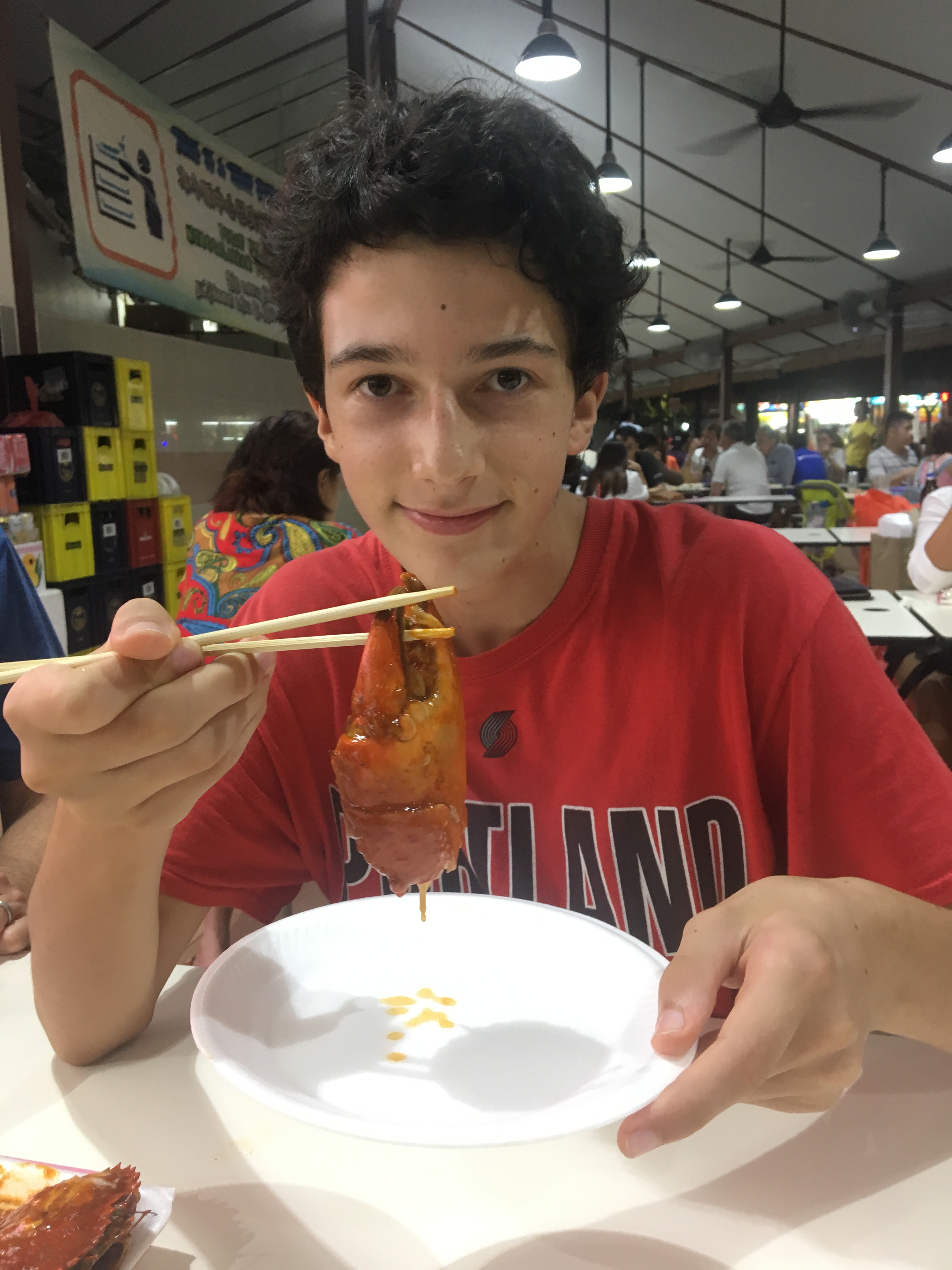

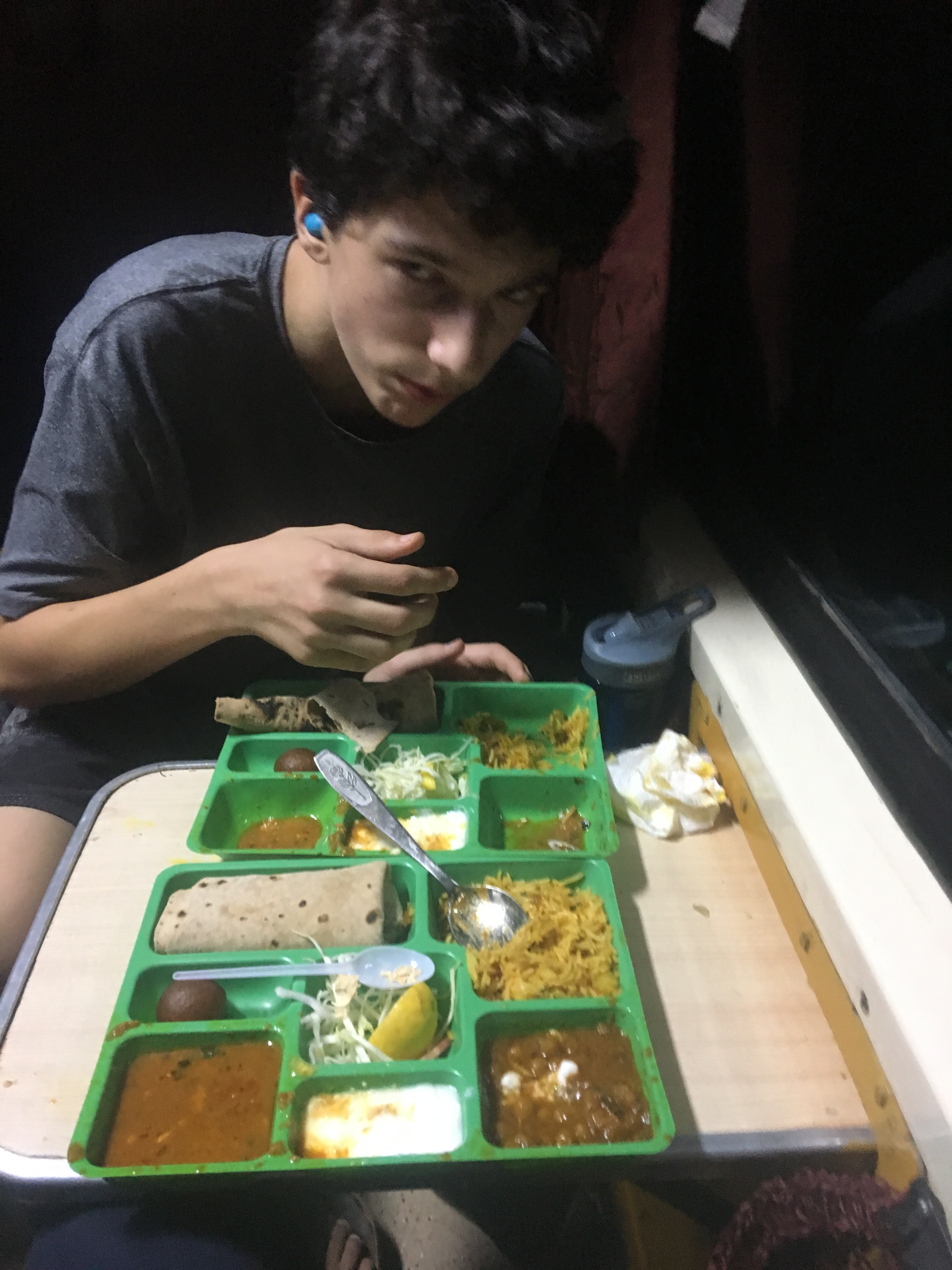
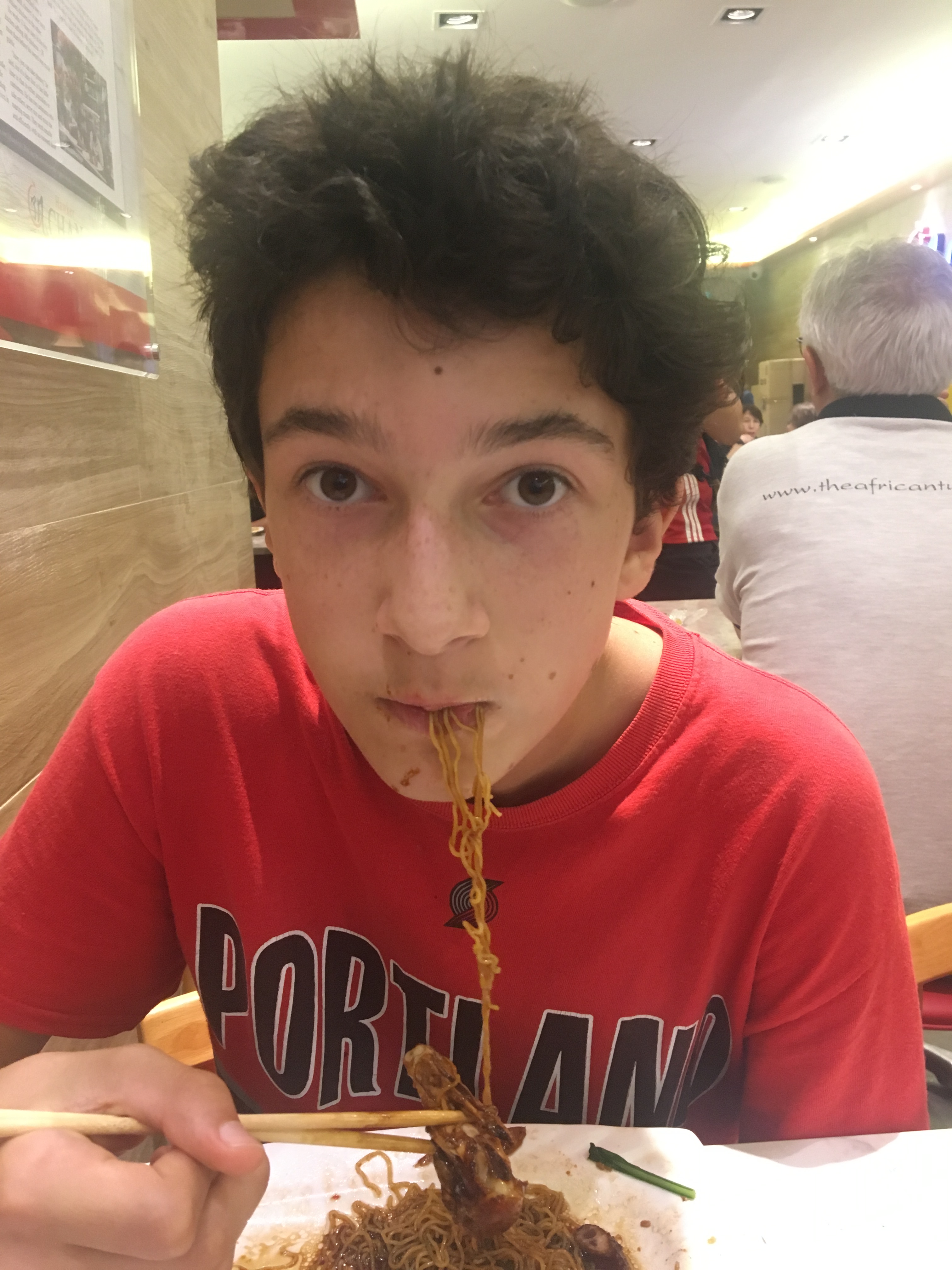
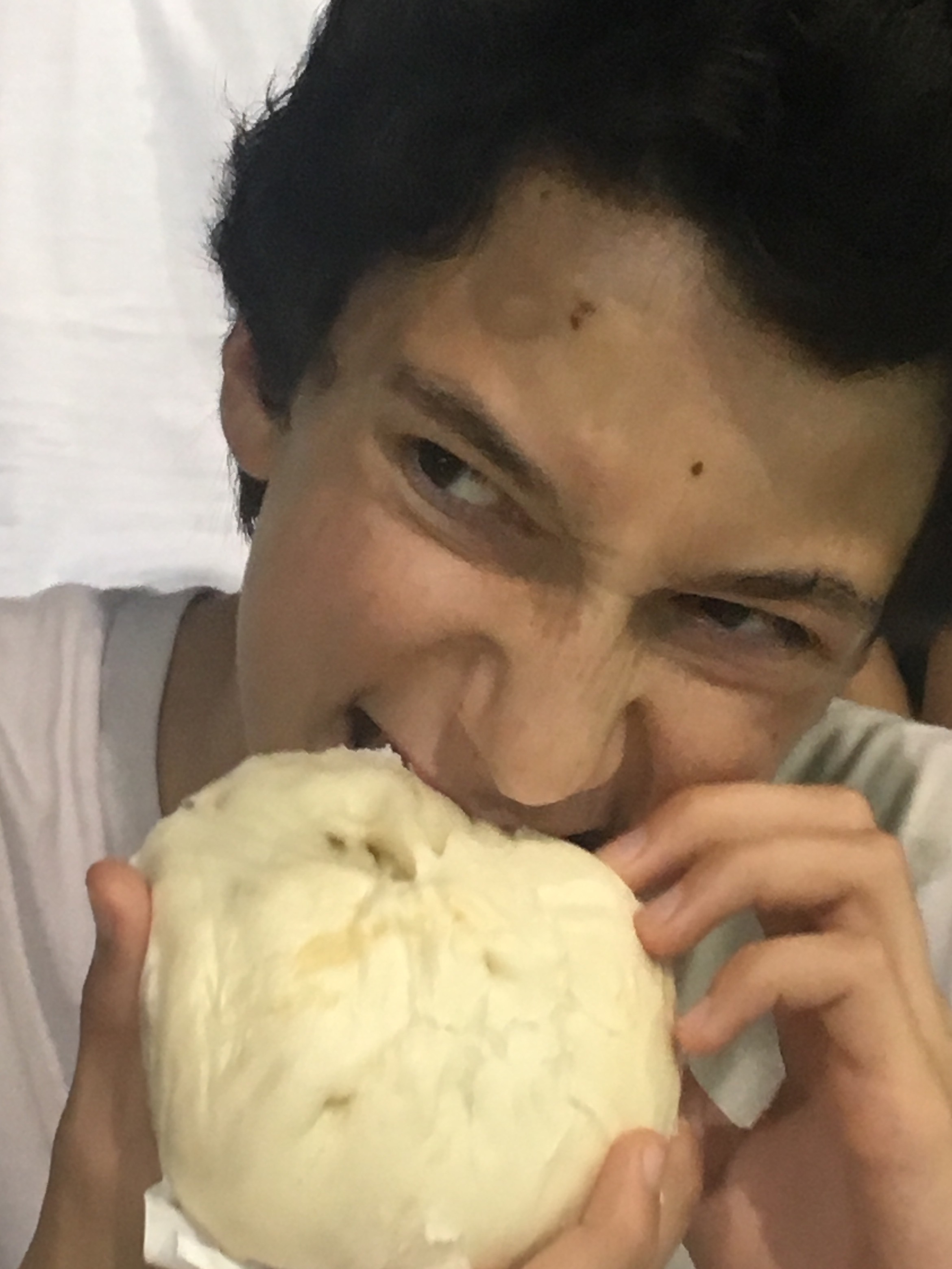
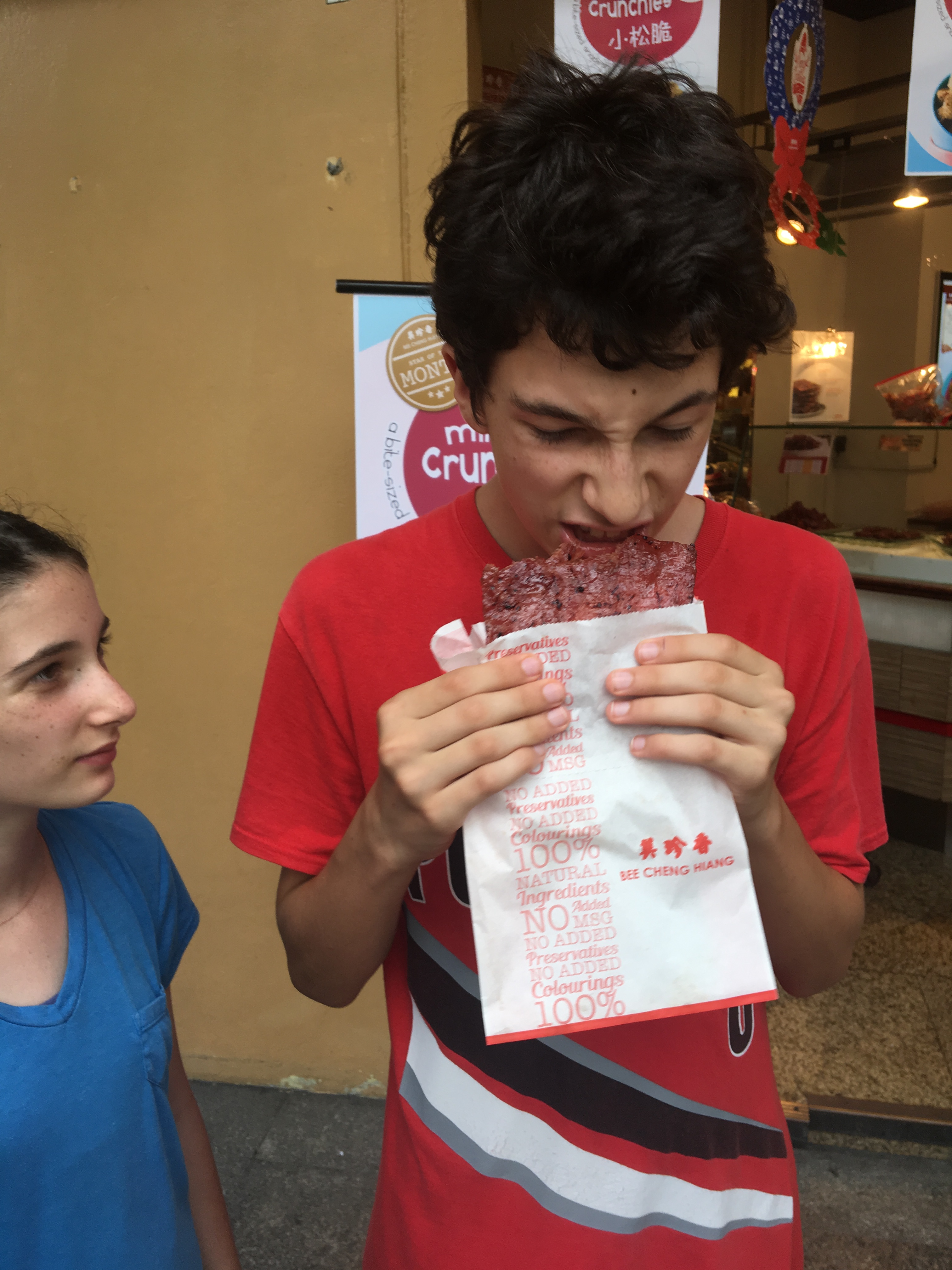
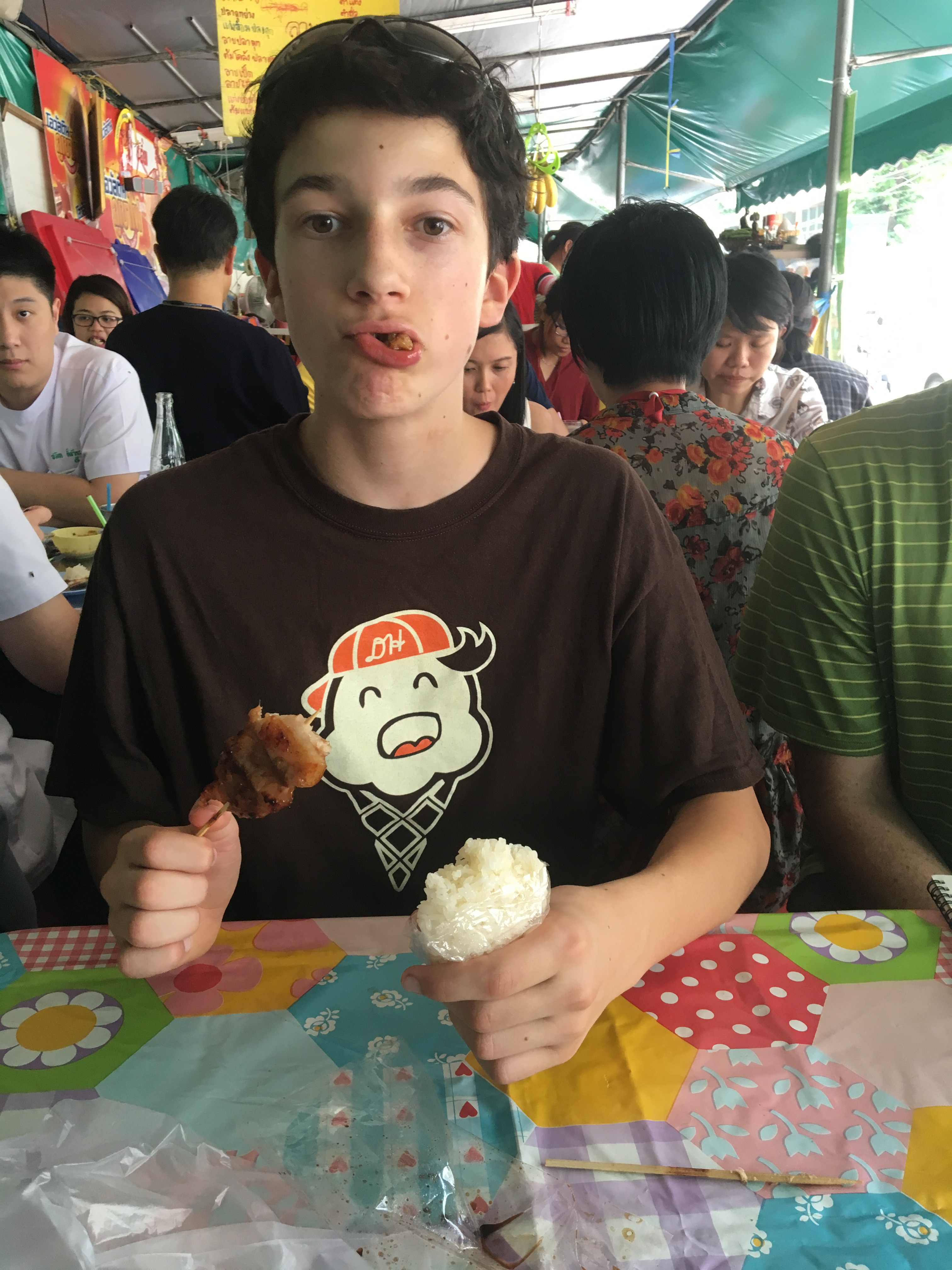
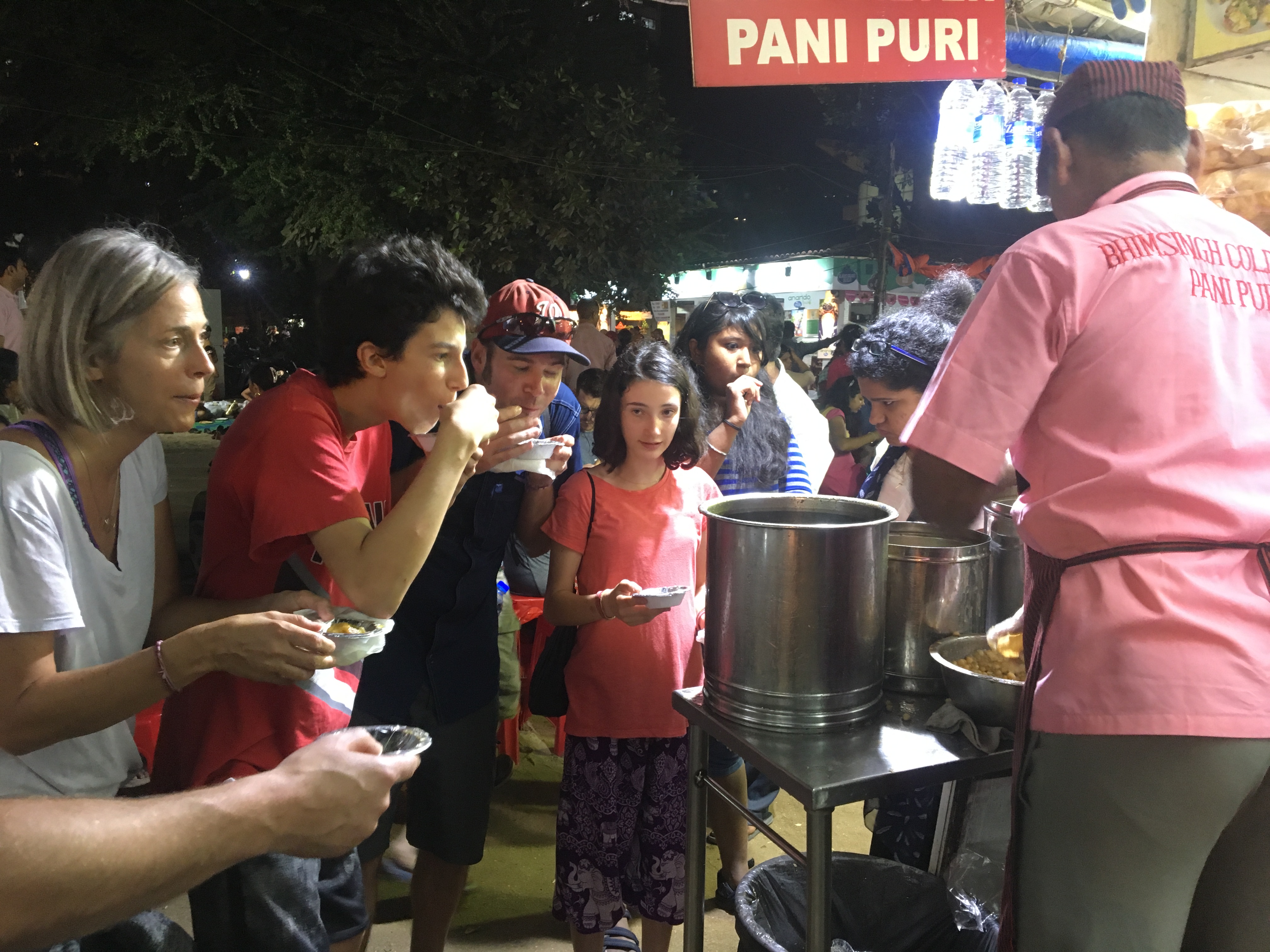





 Hey – it’s Maya!
Hey – it’s Maya!

